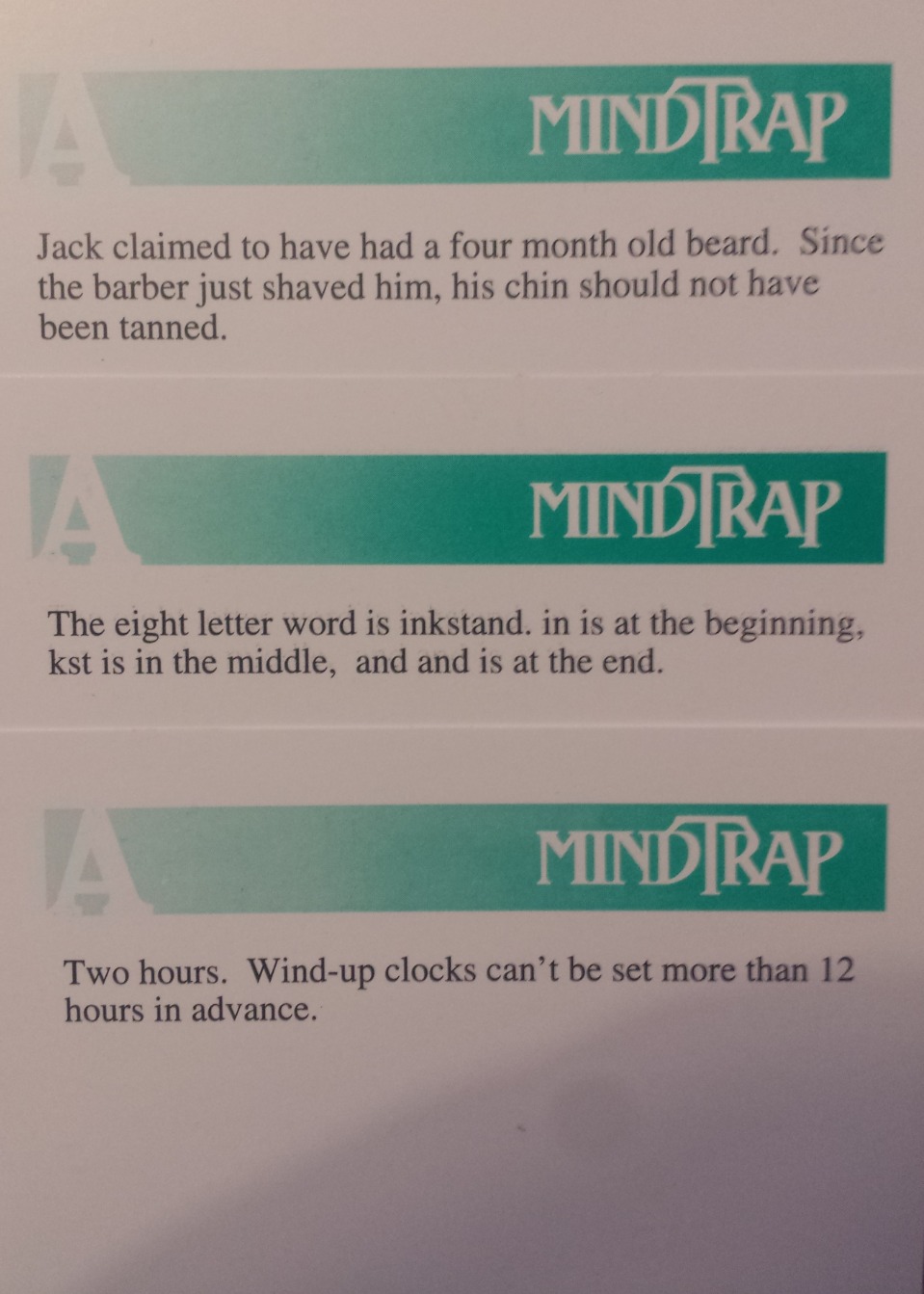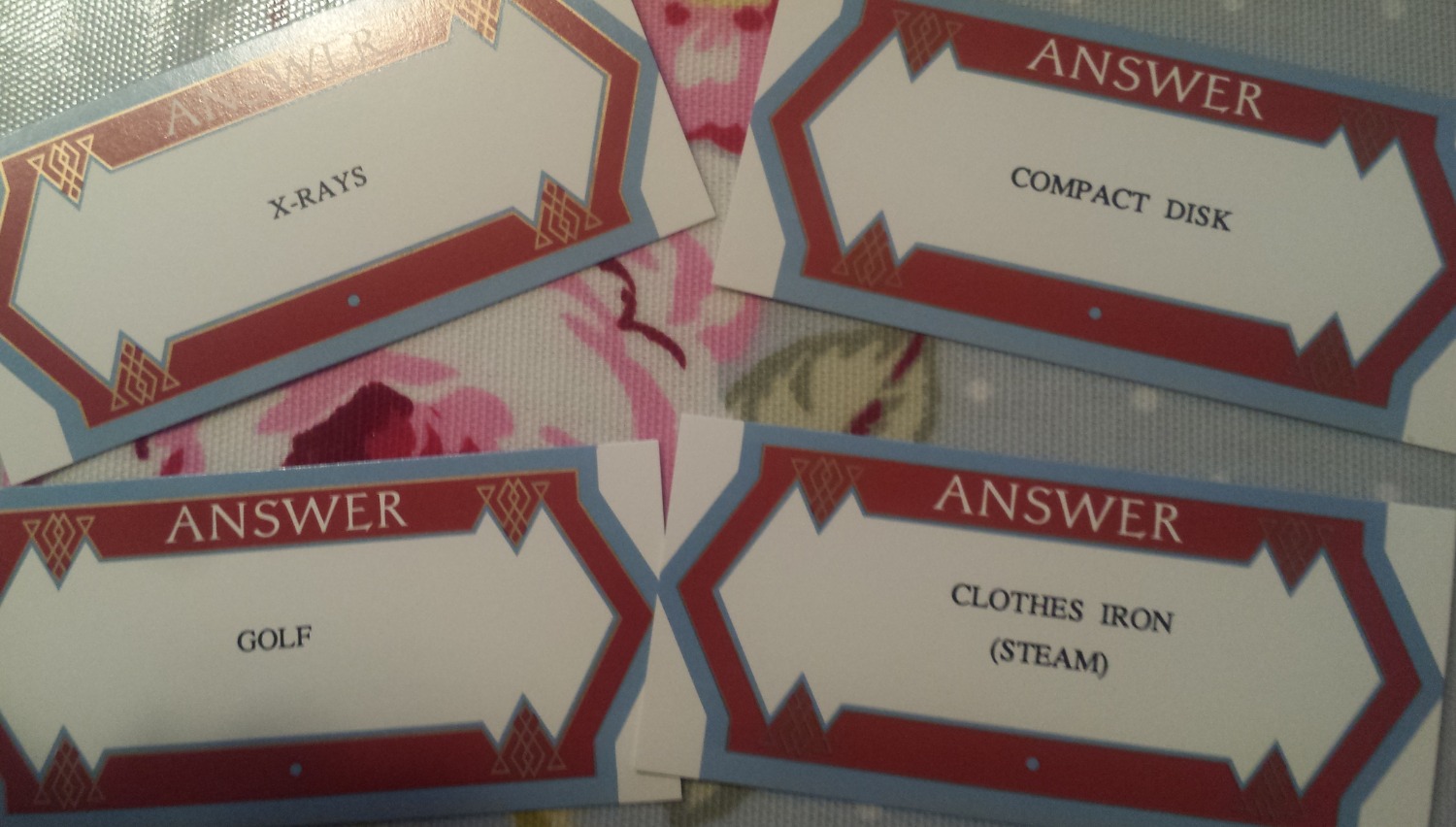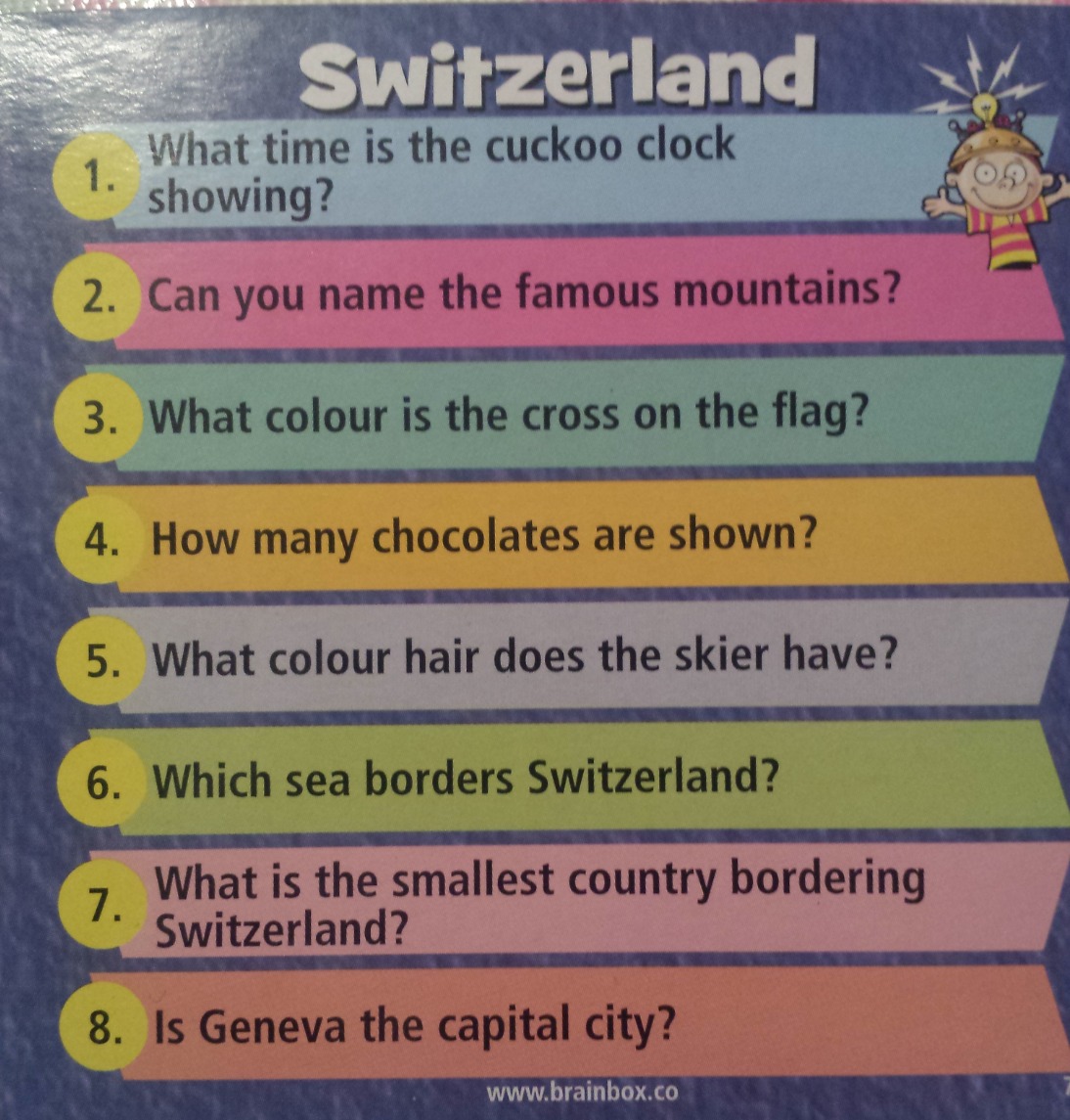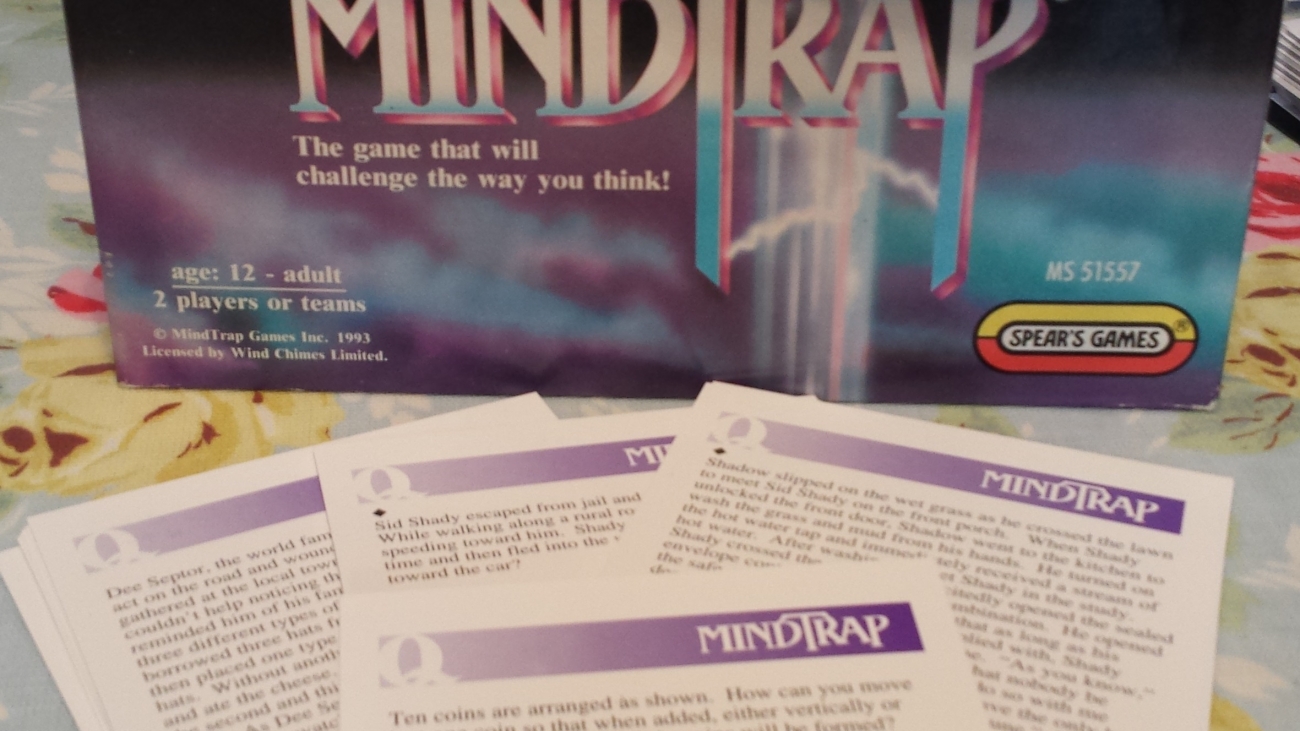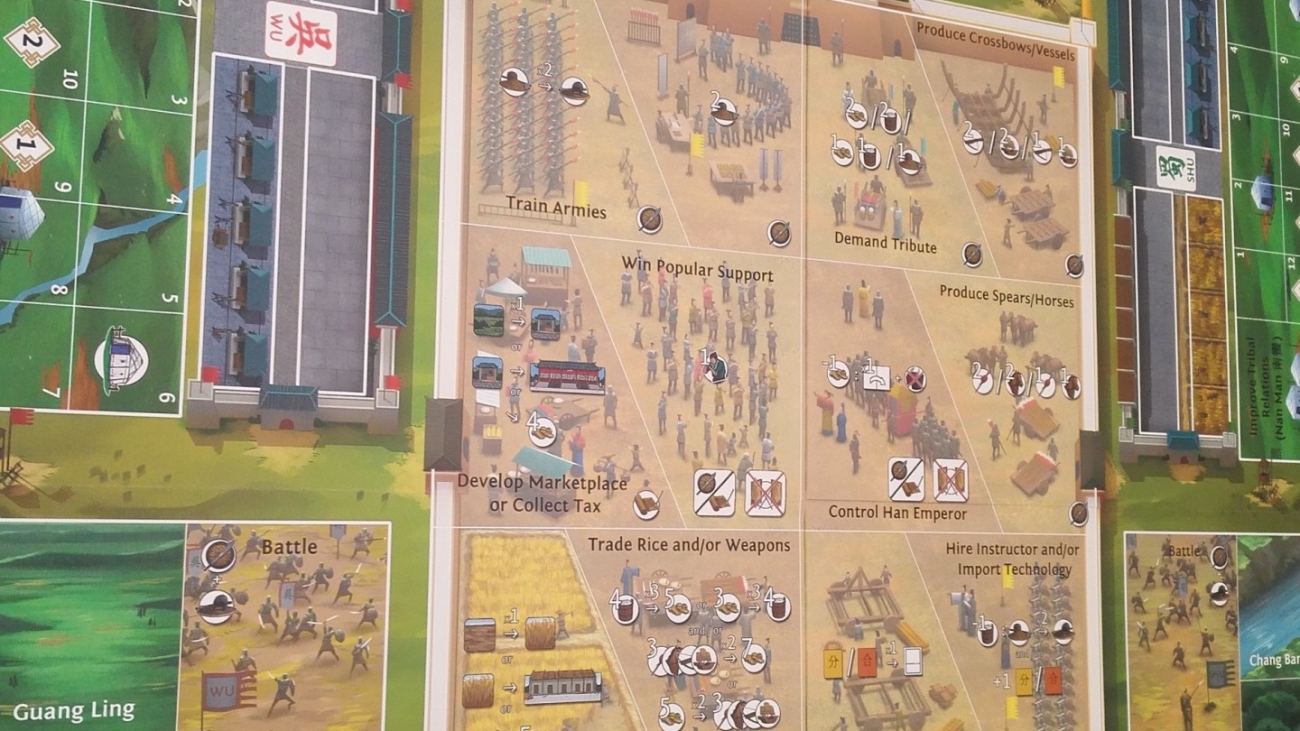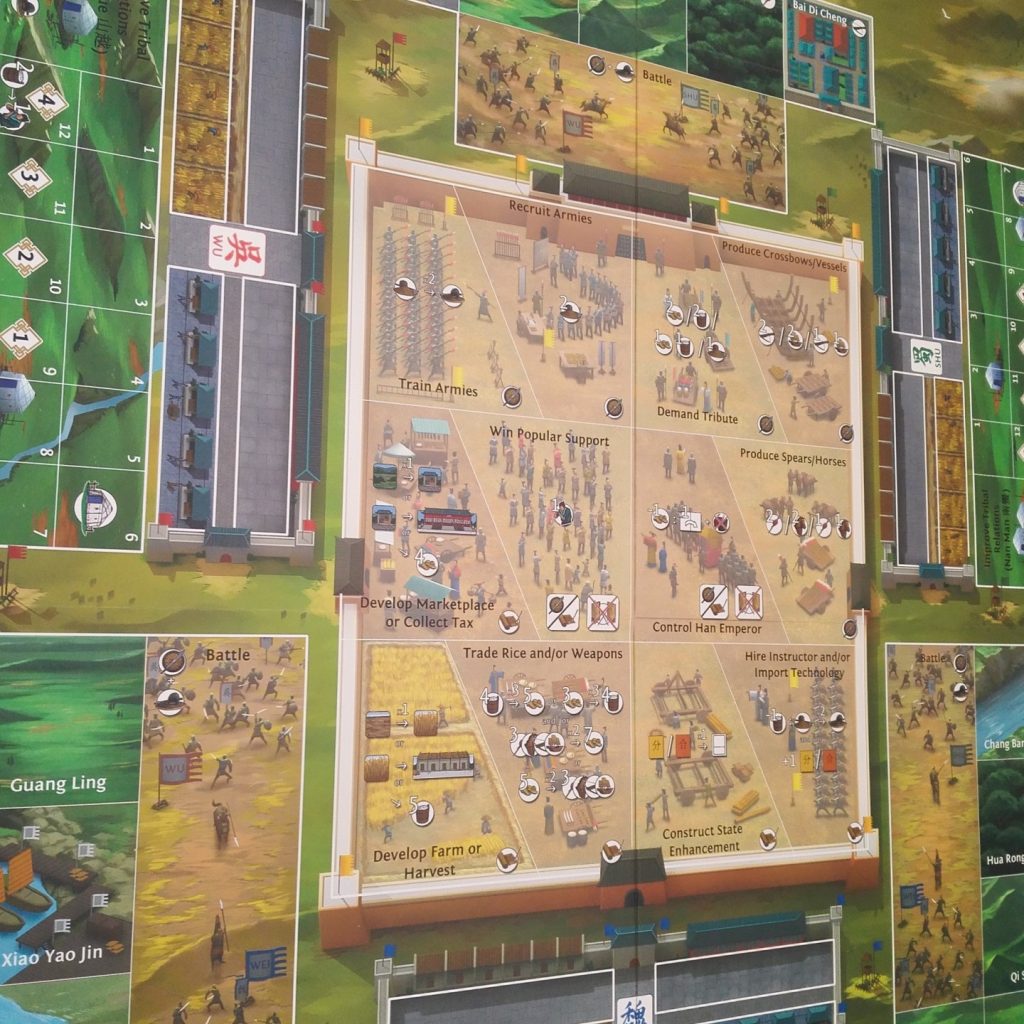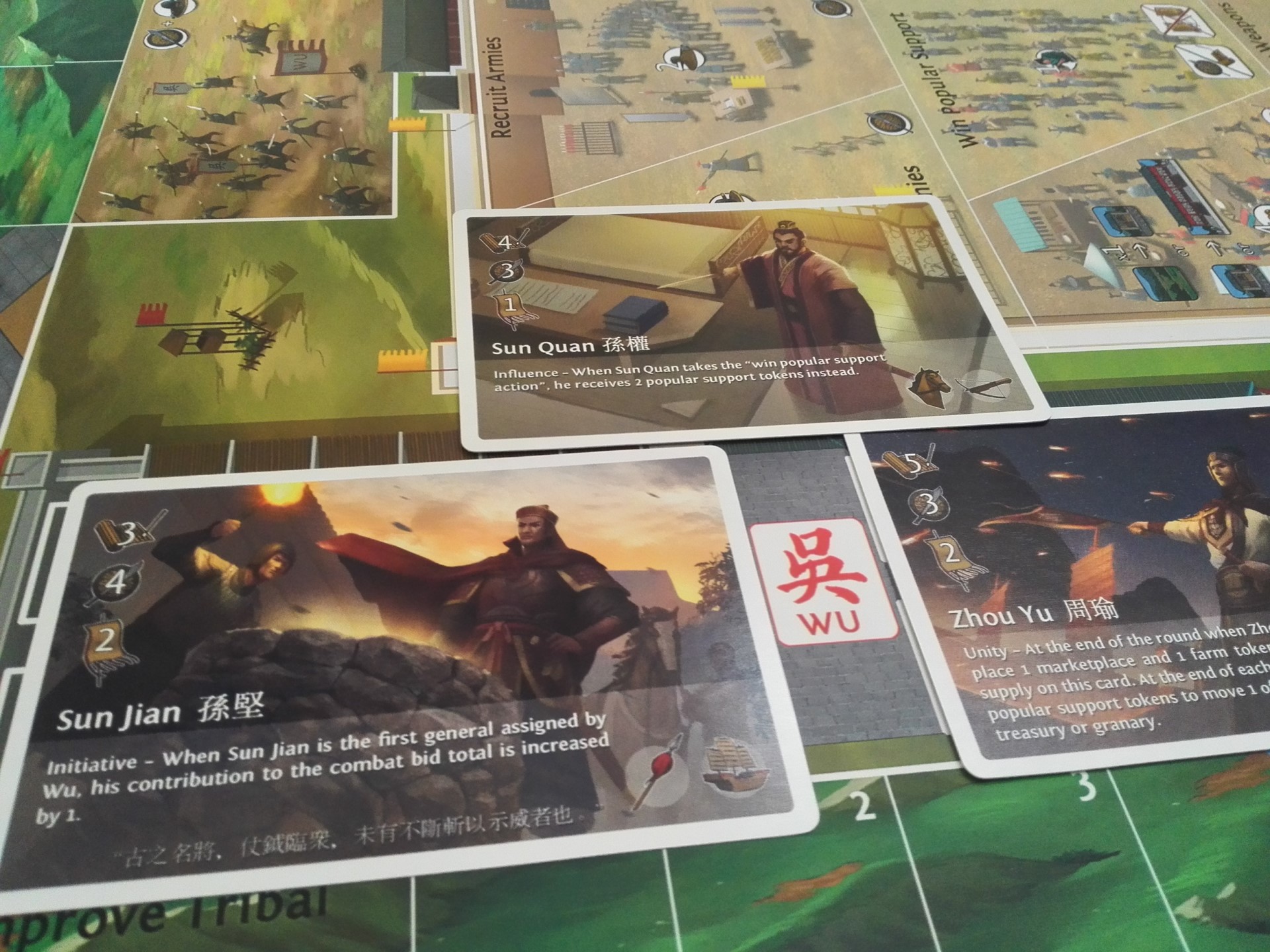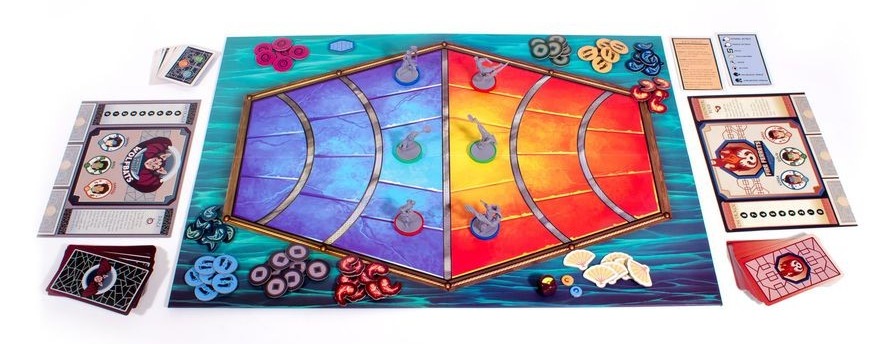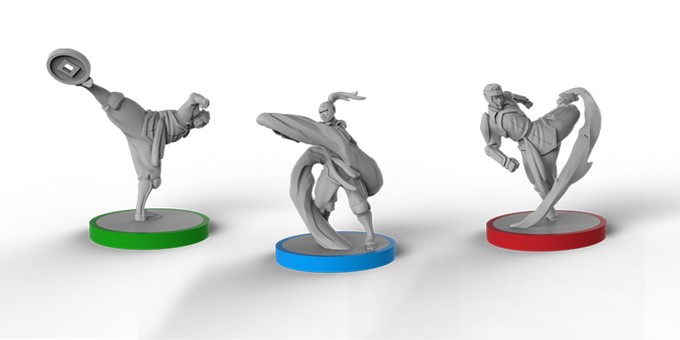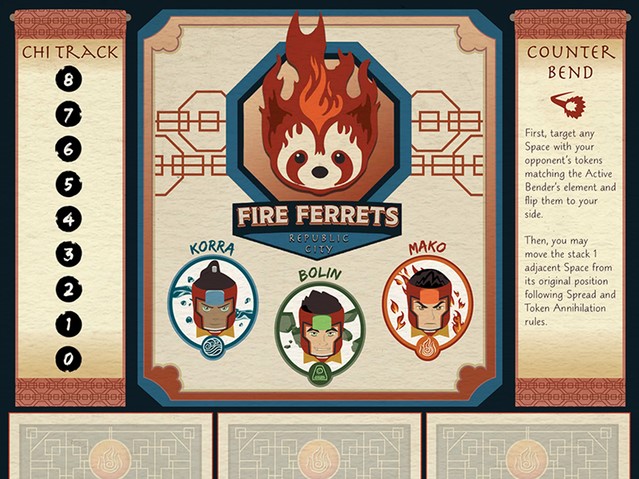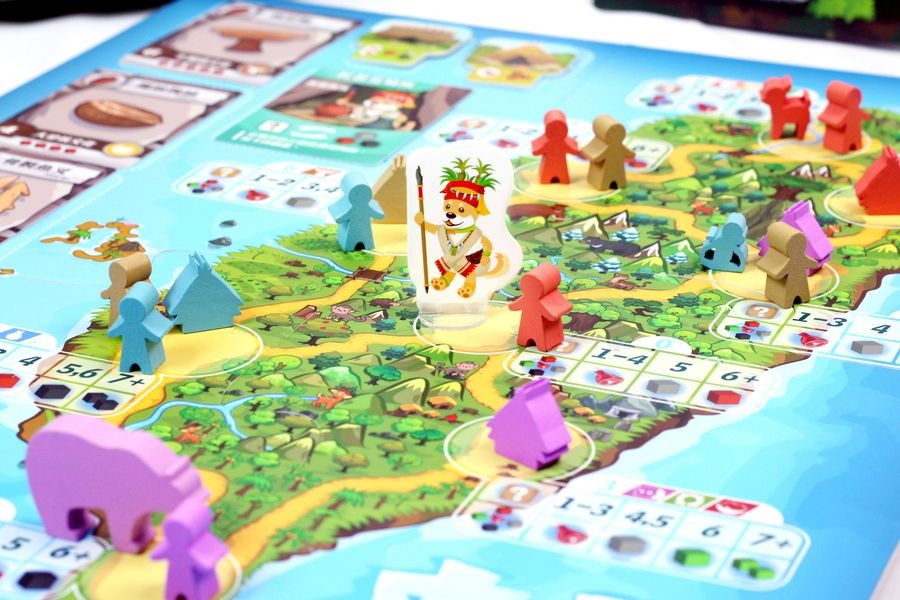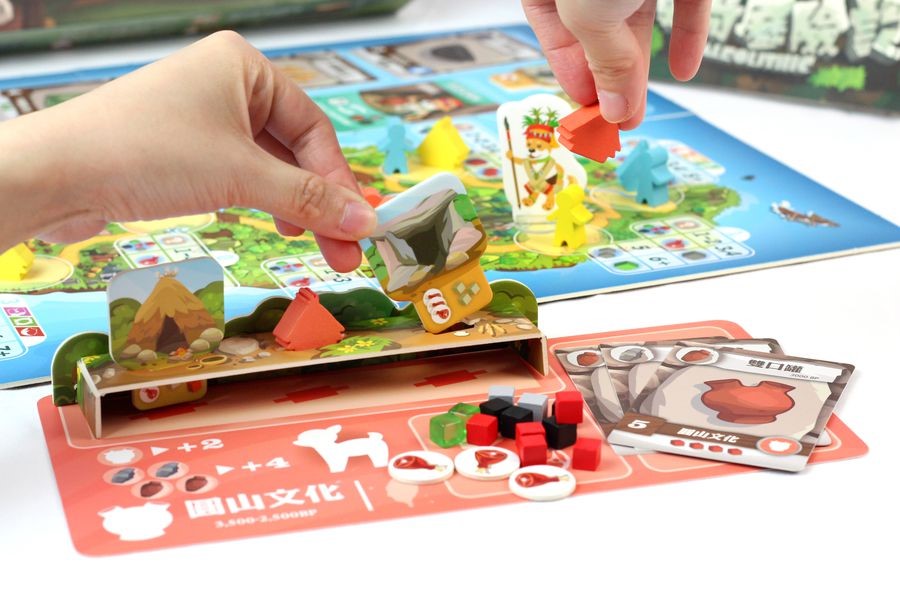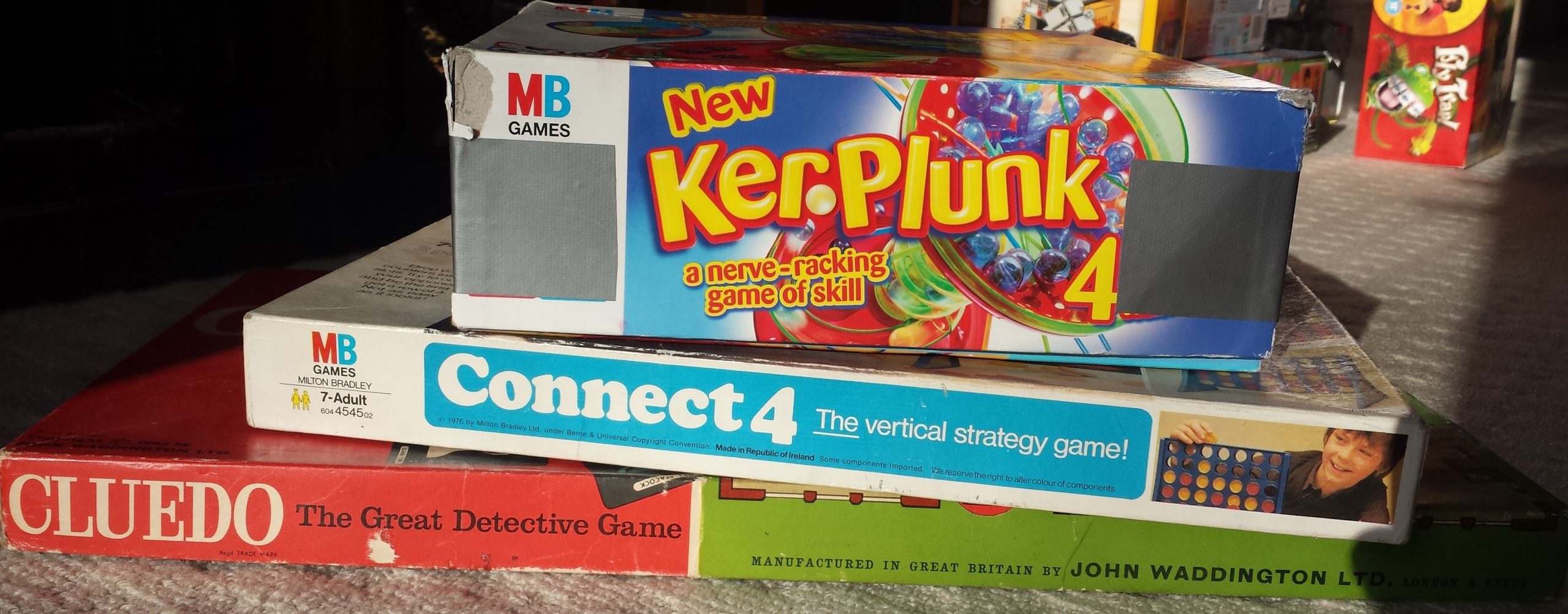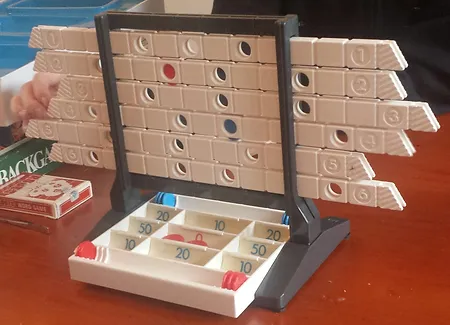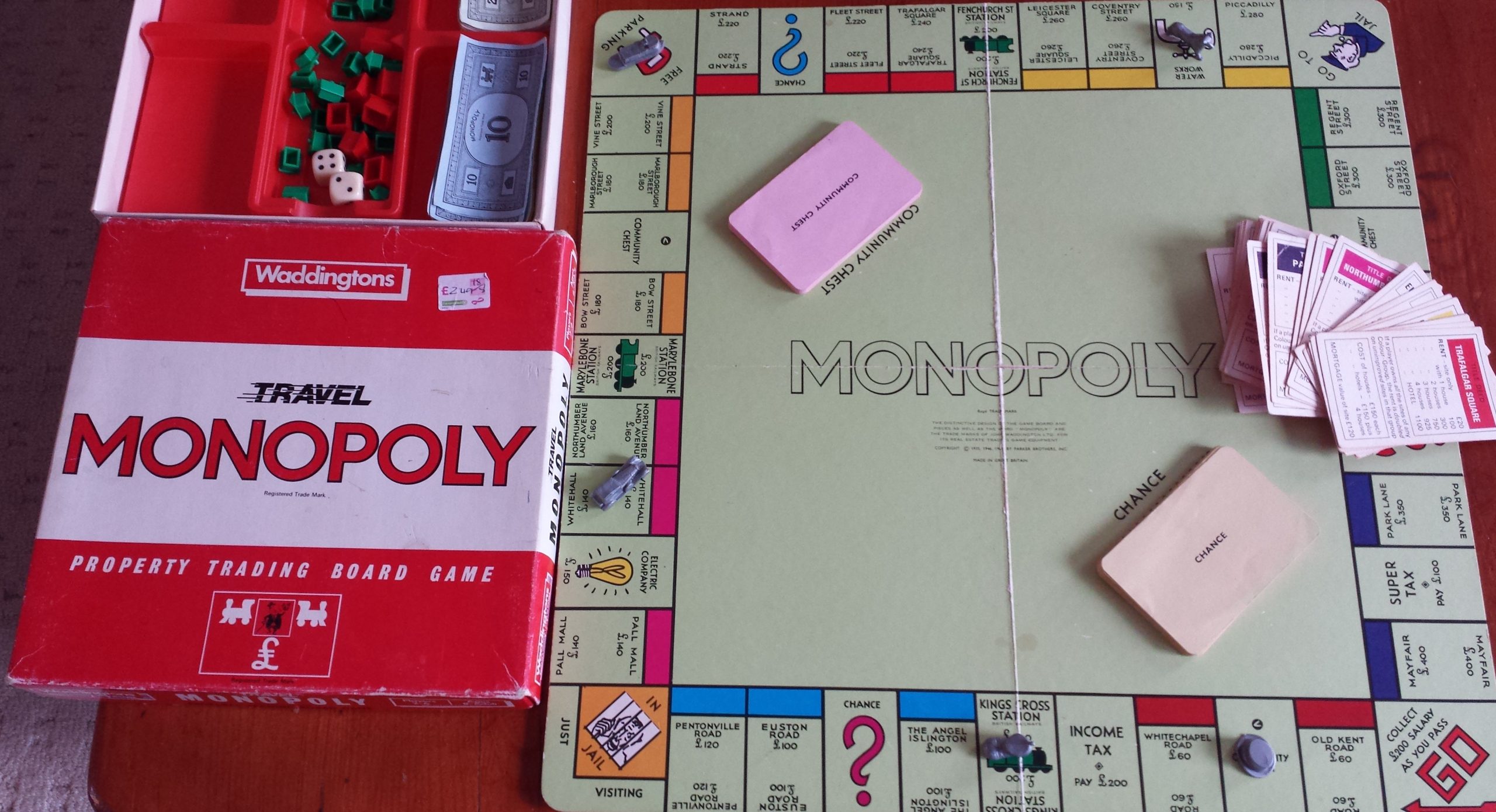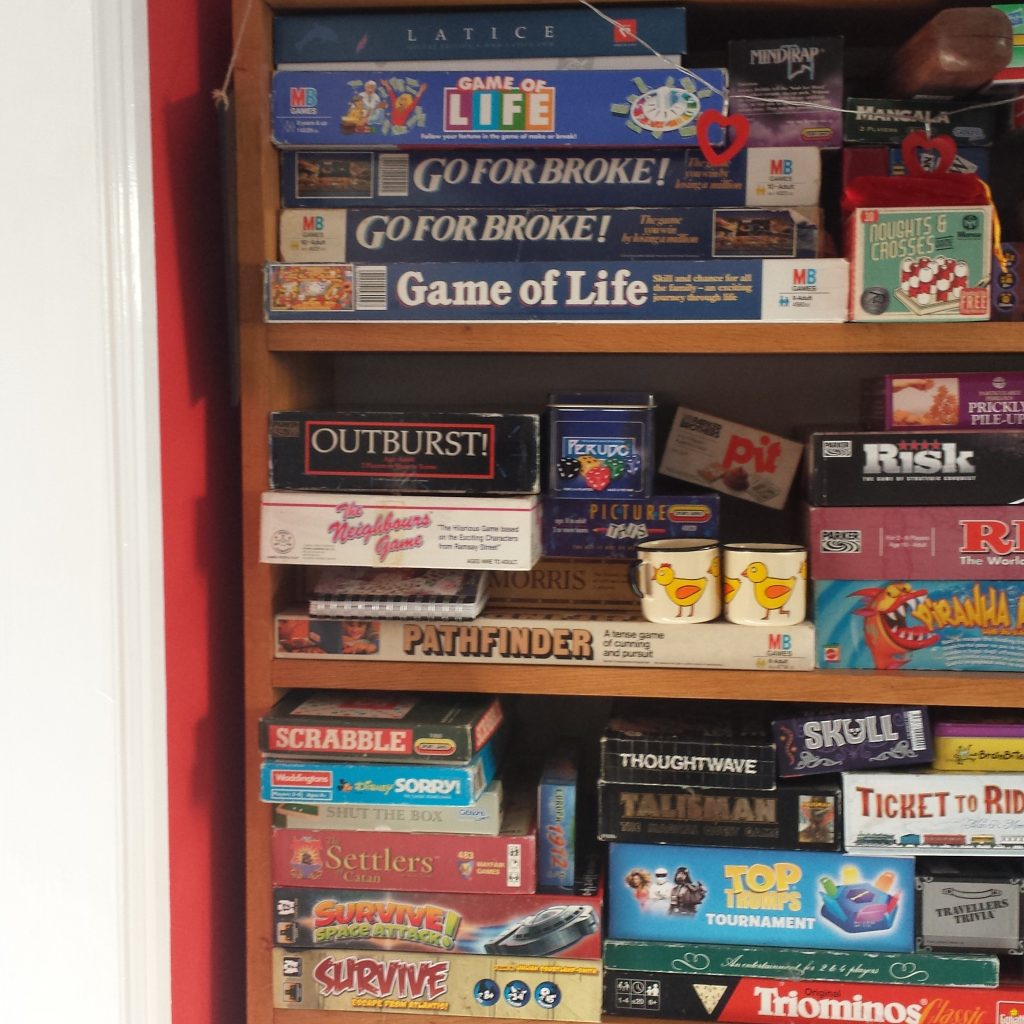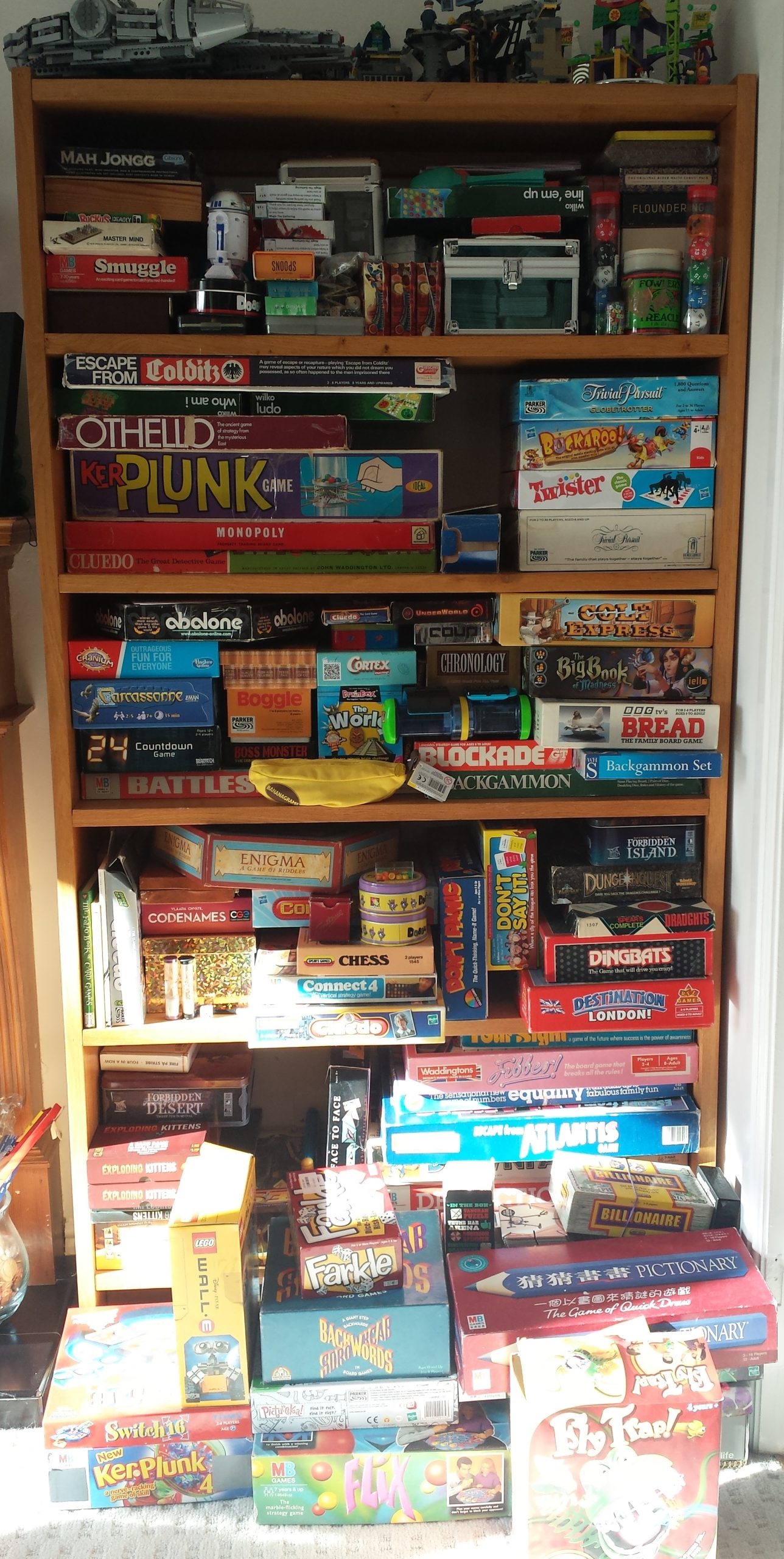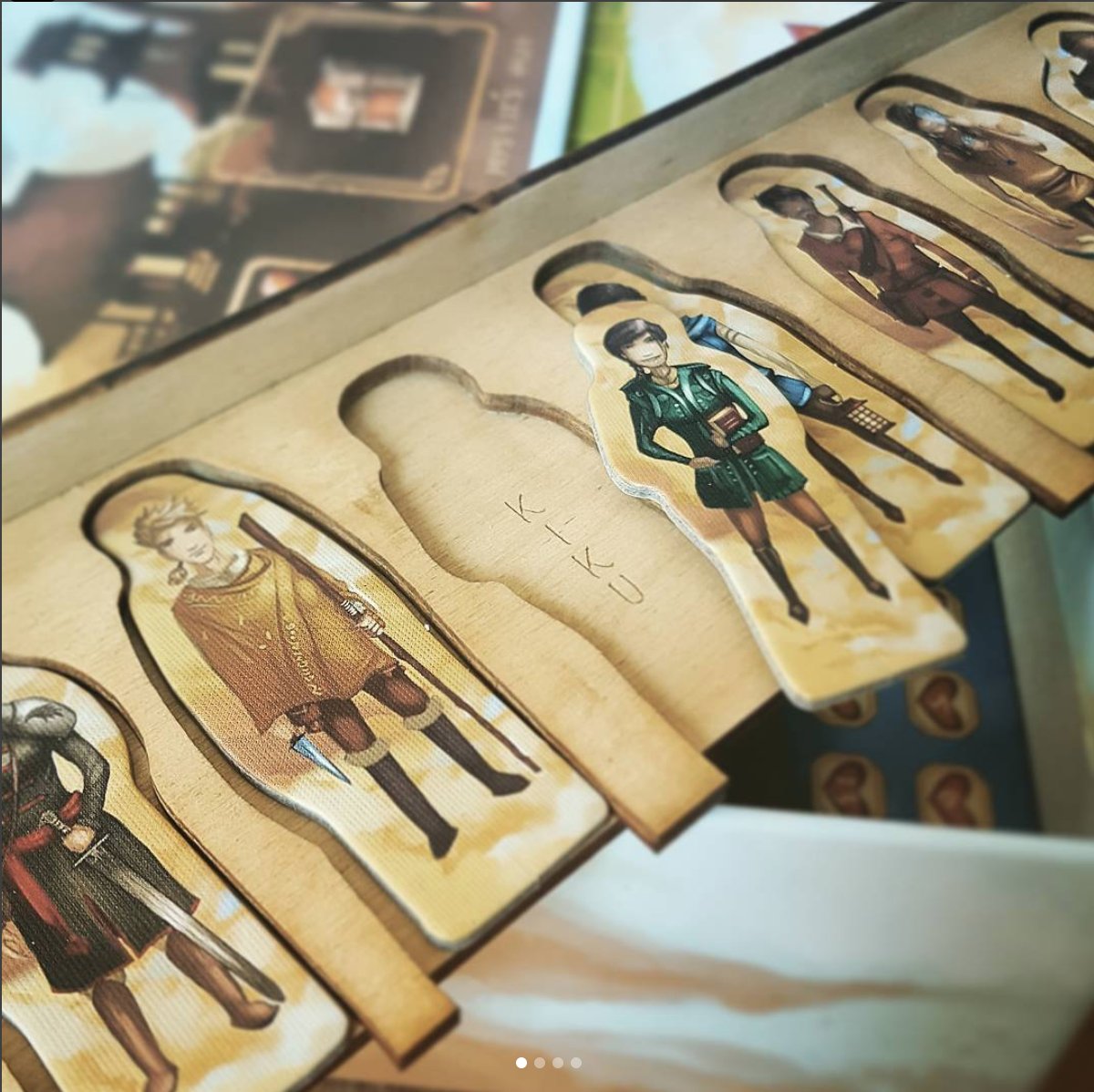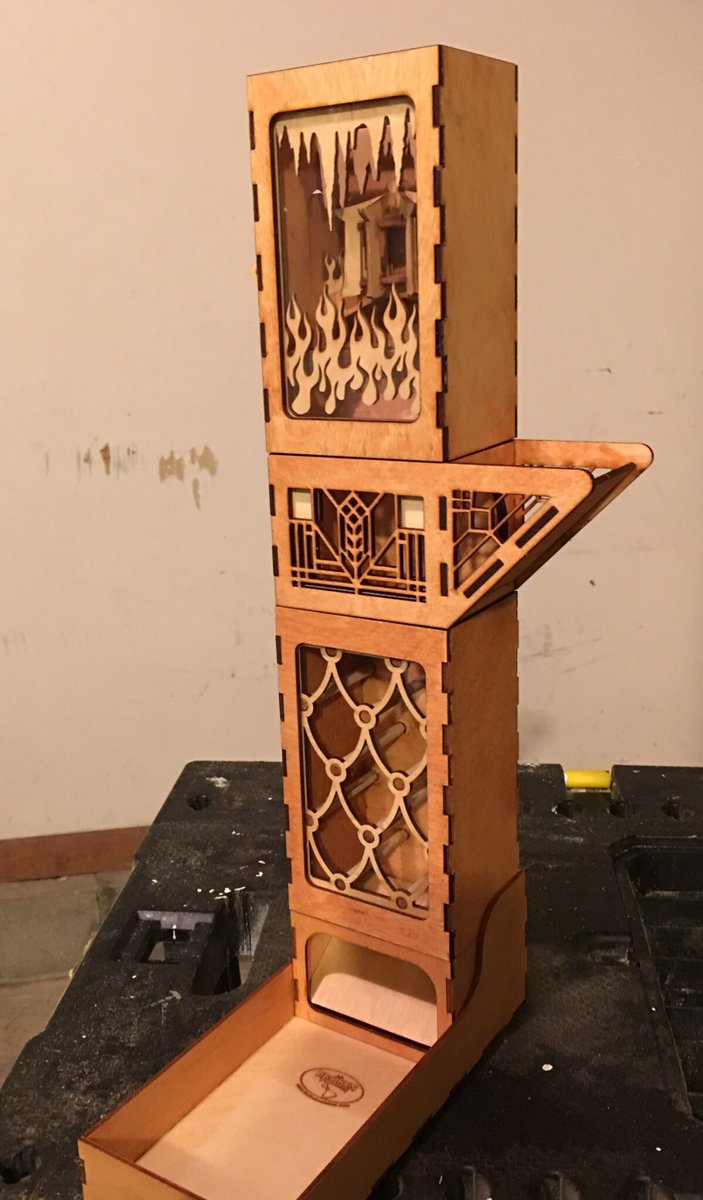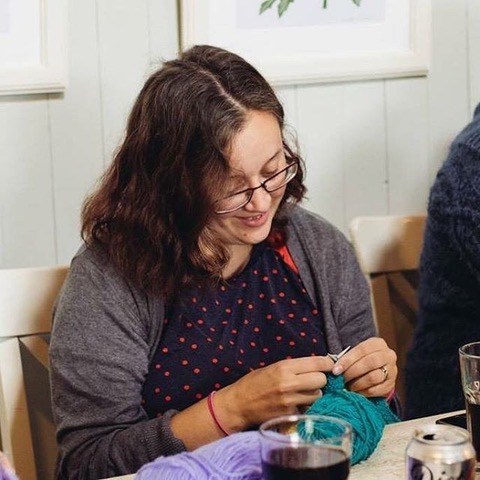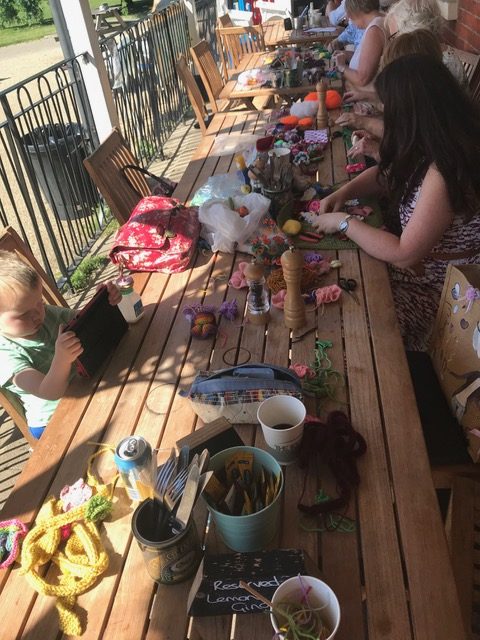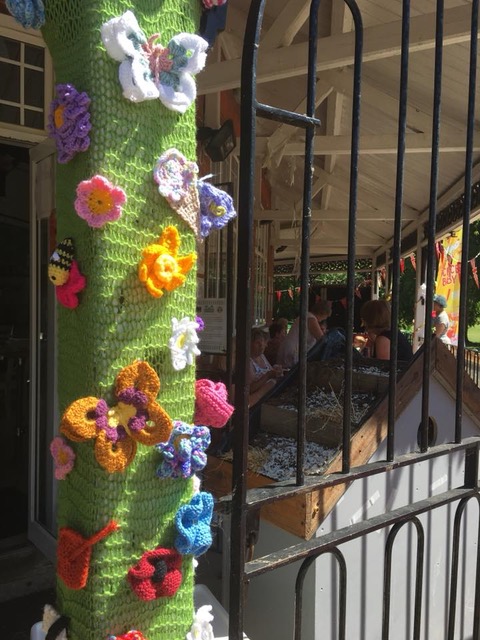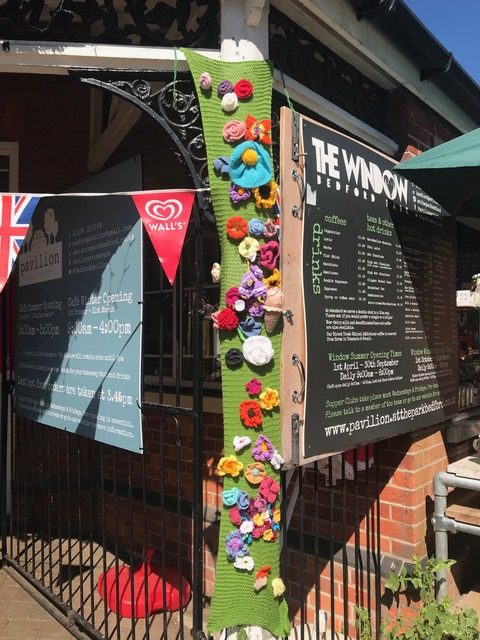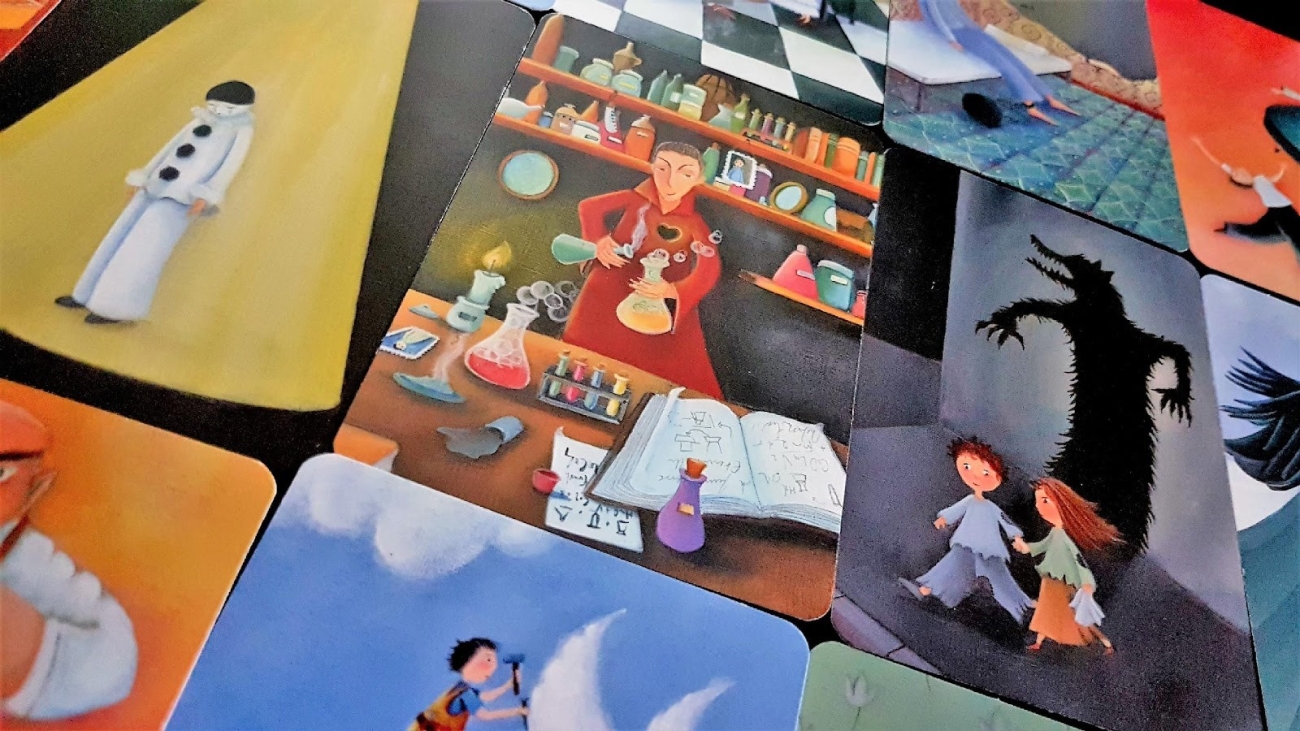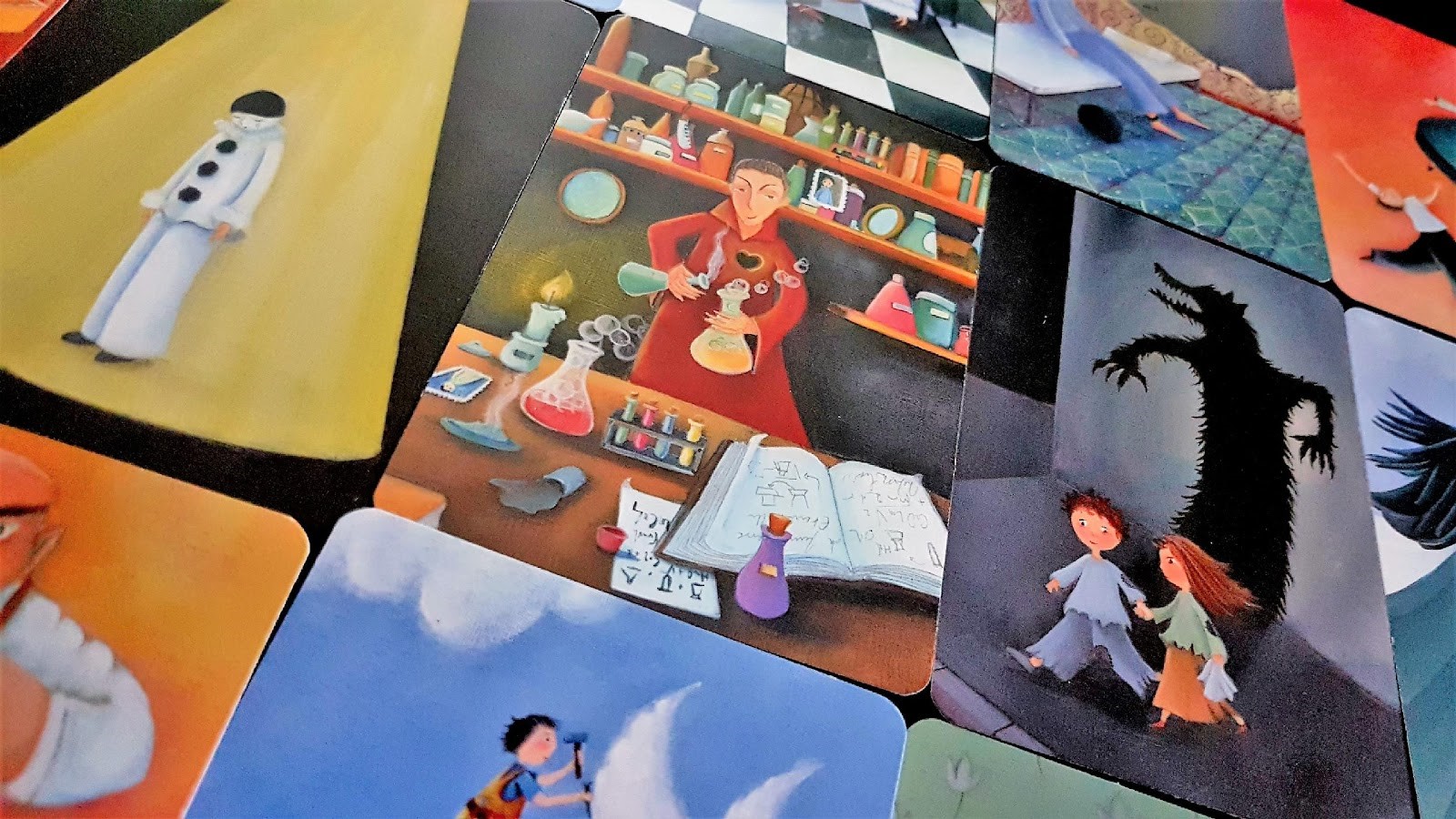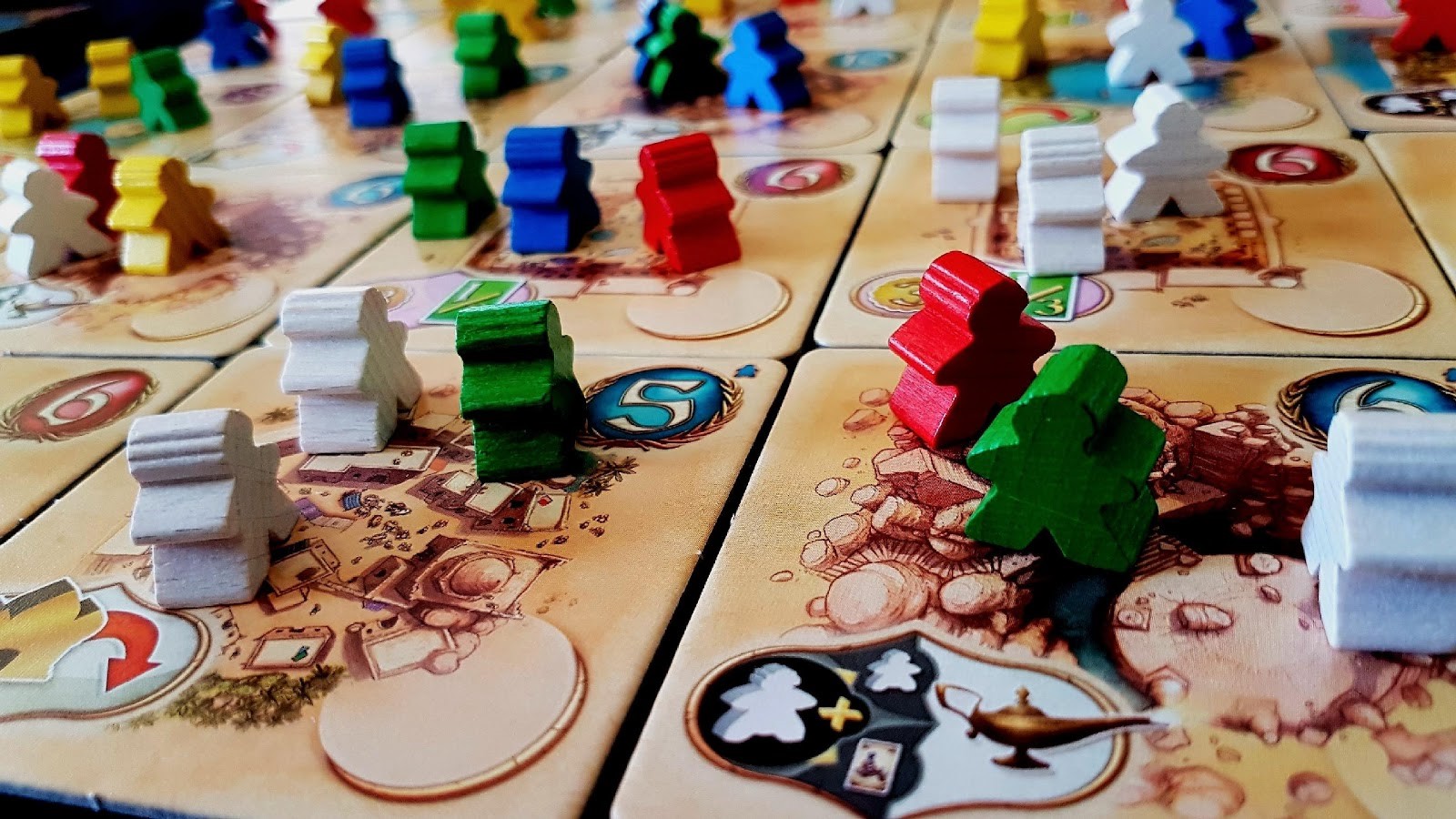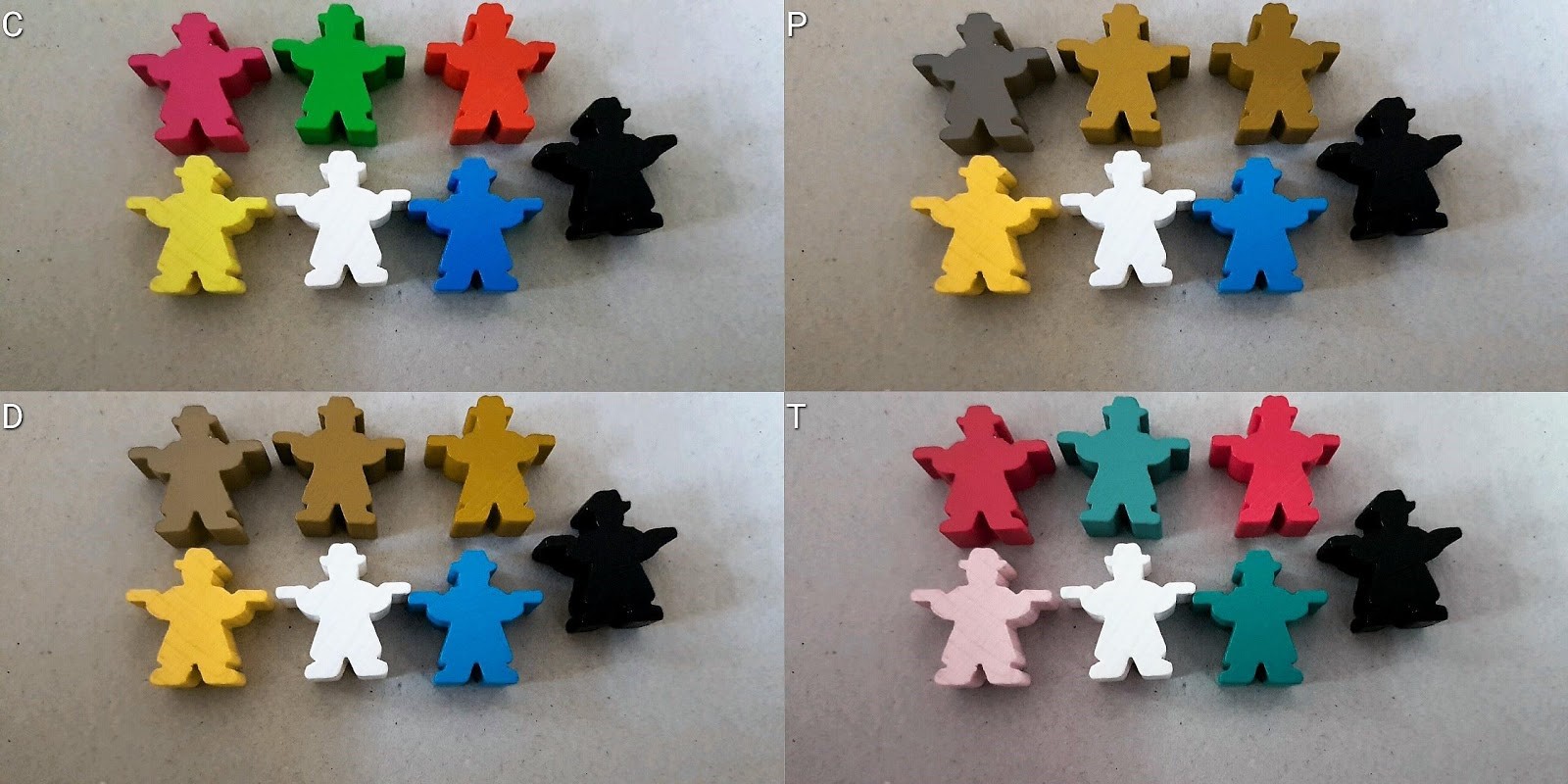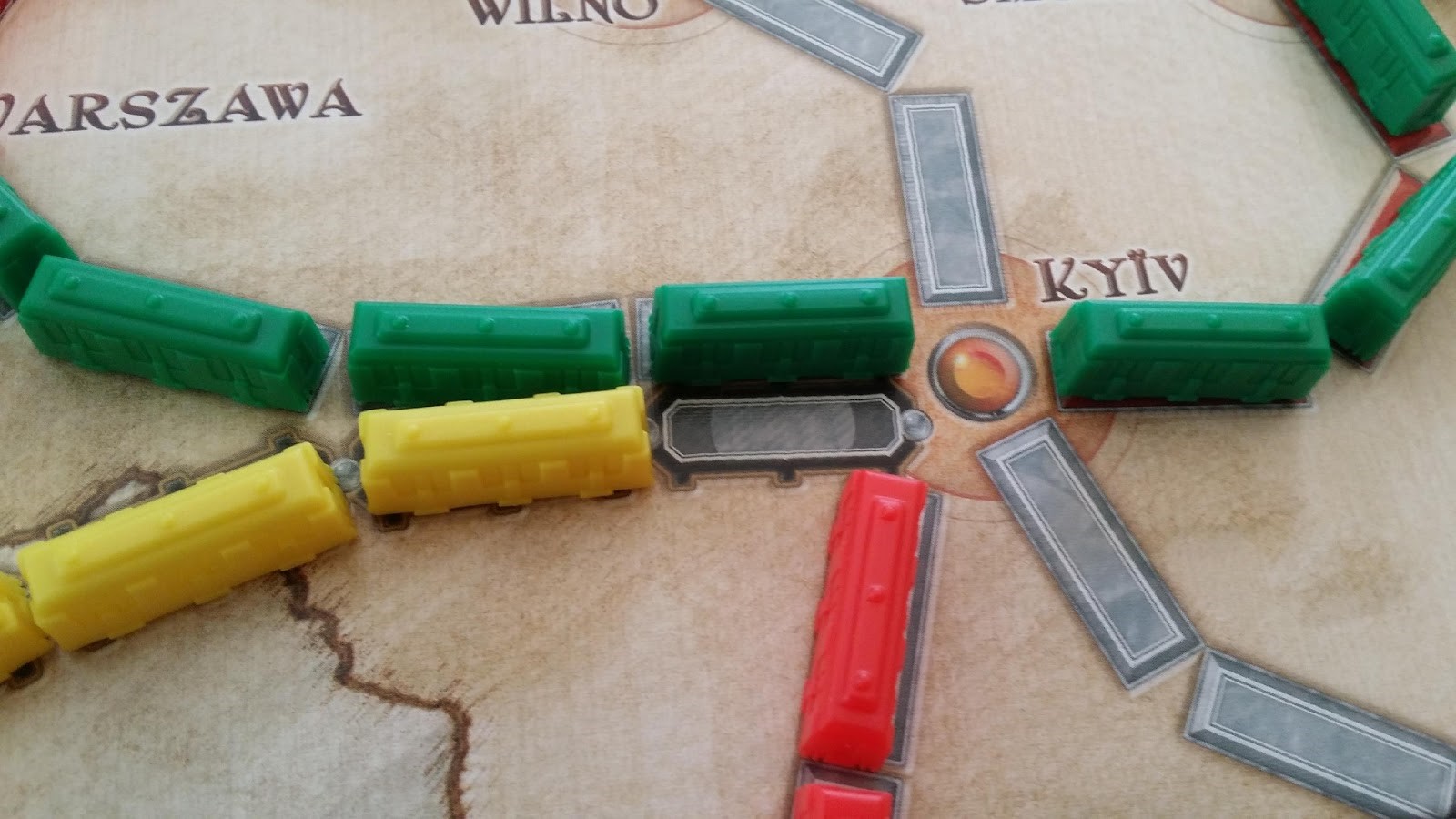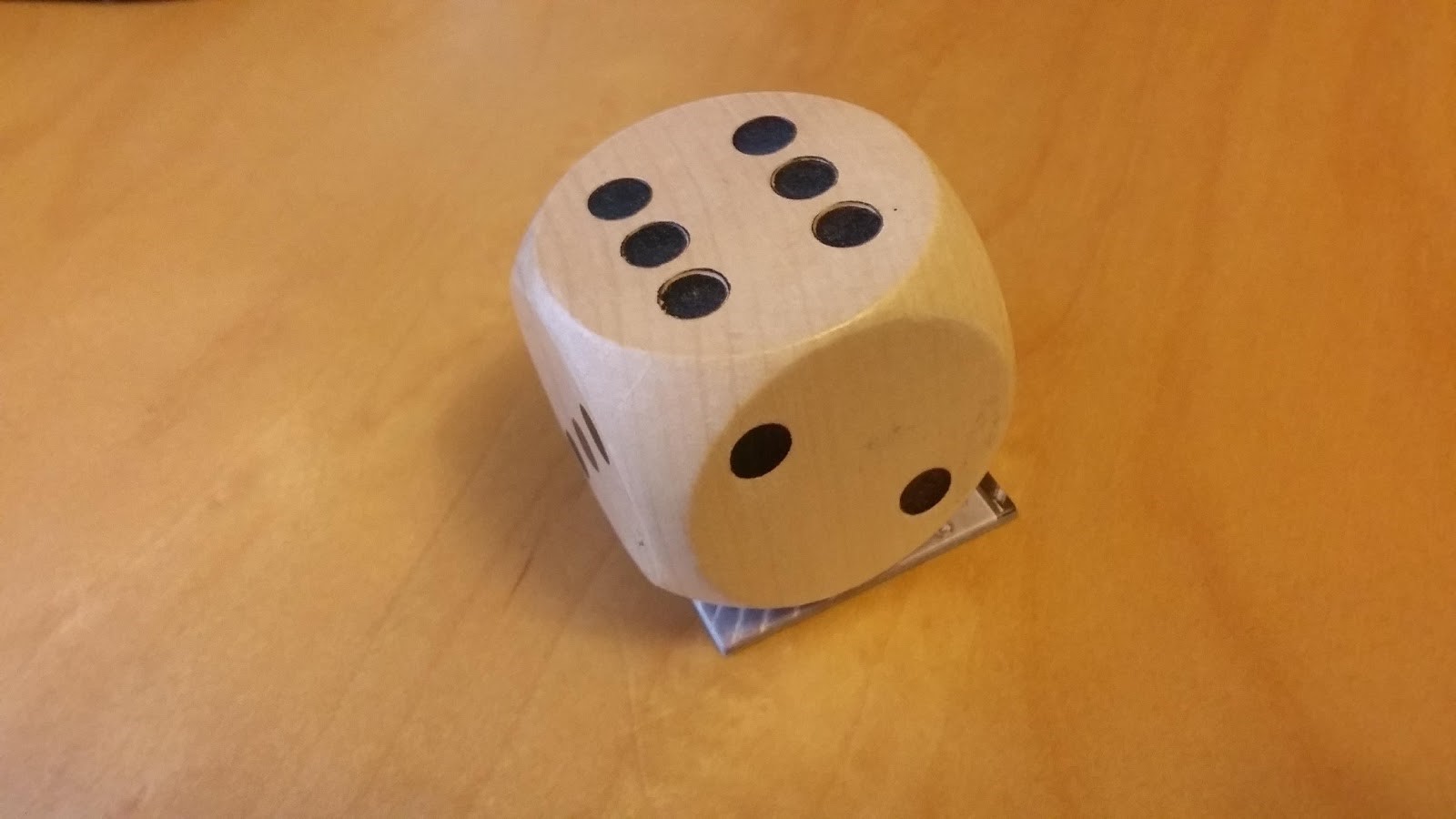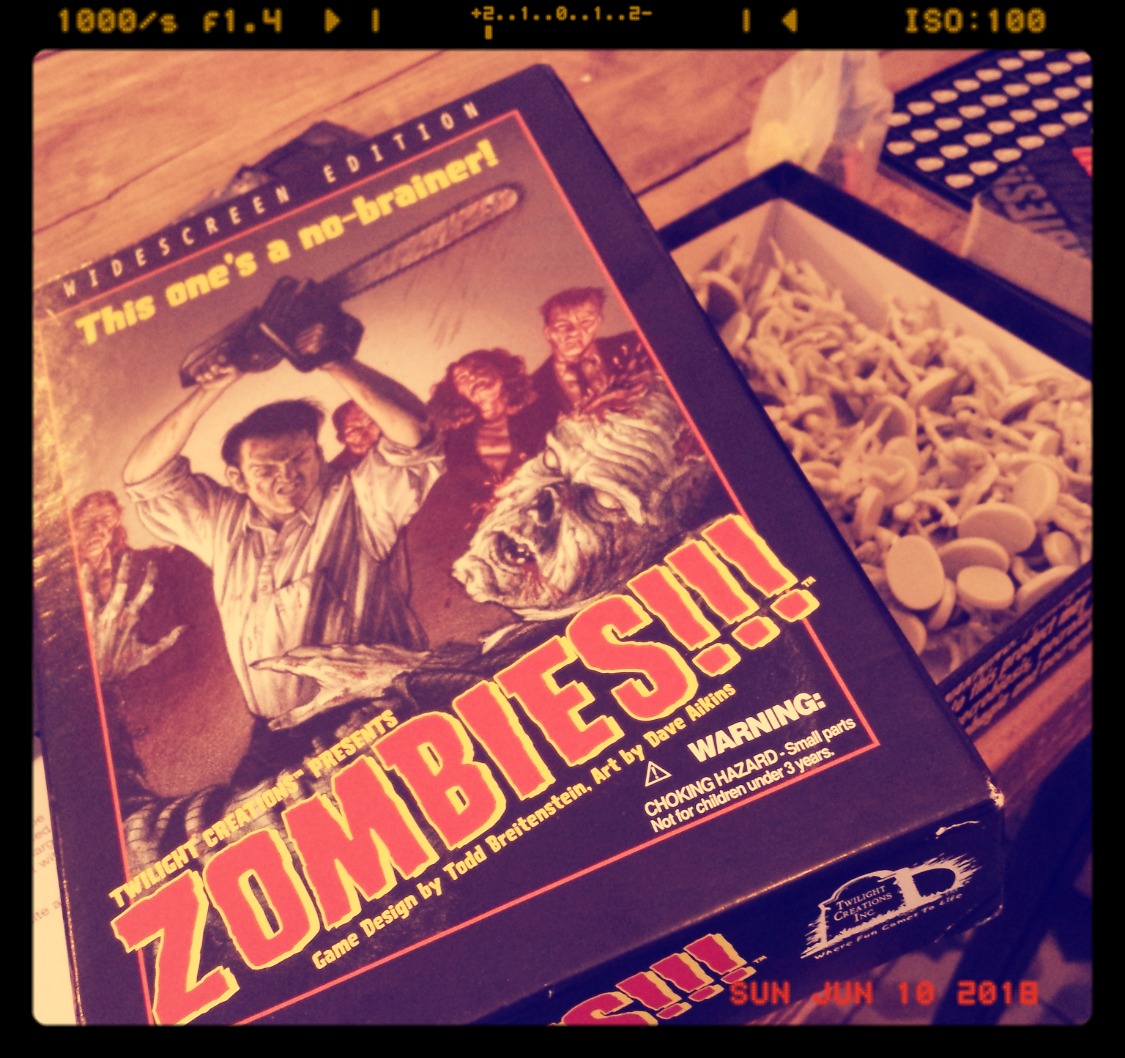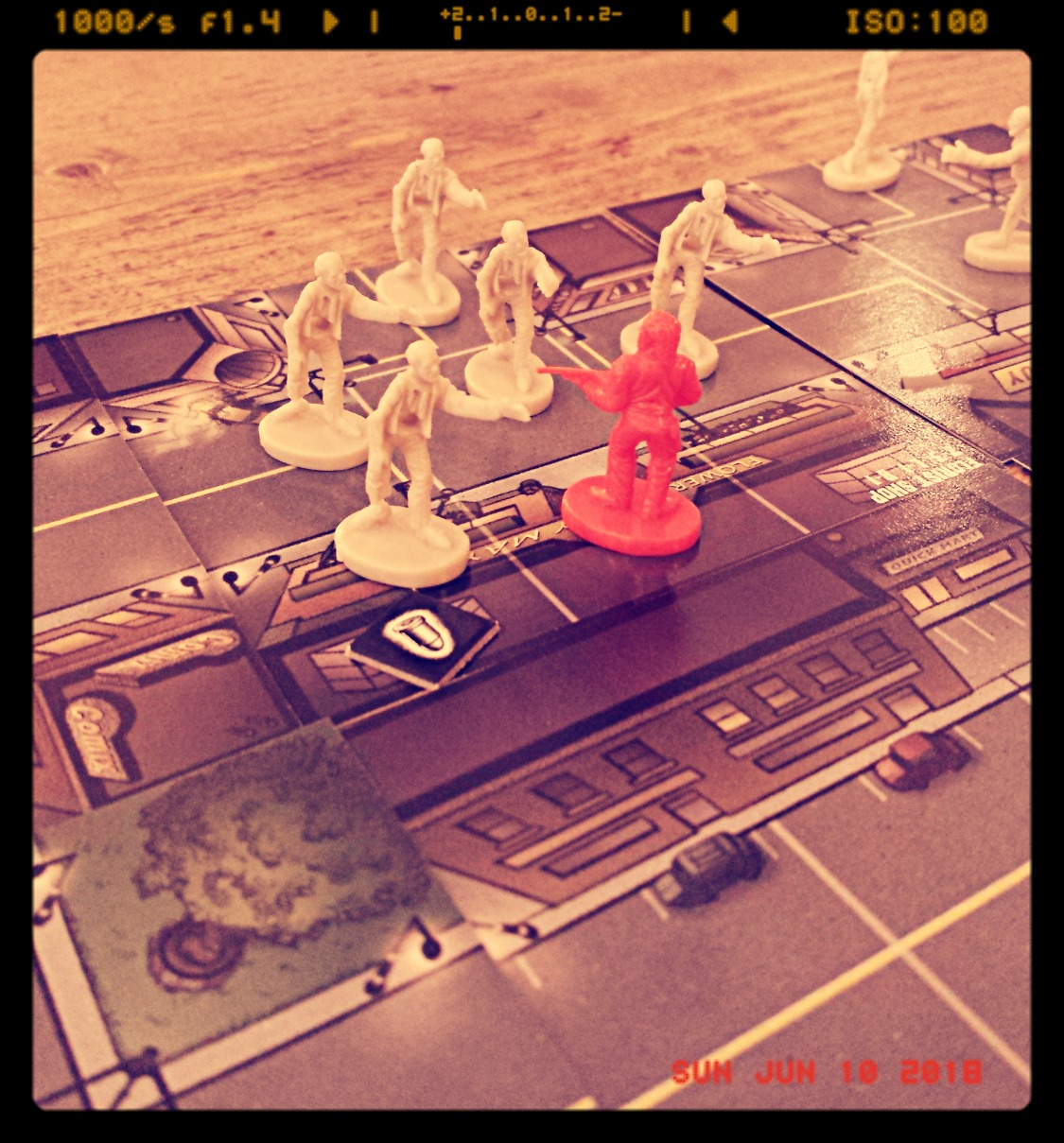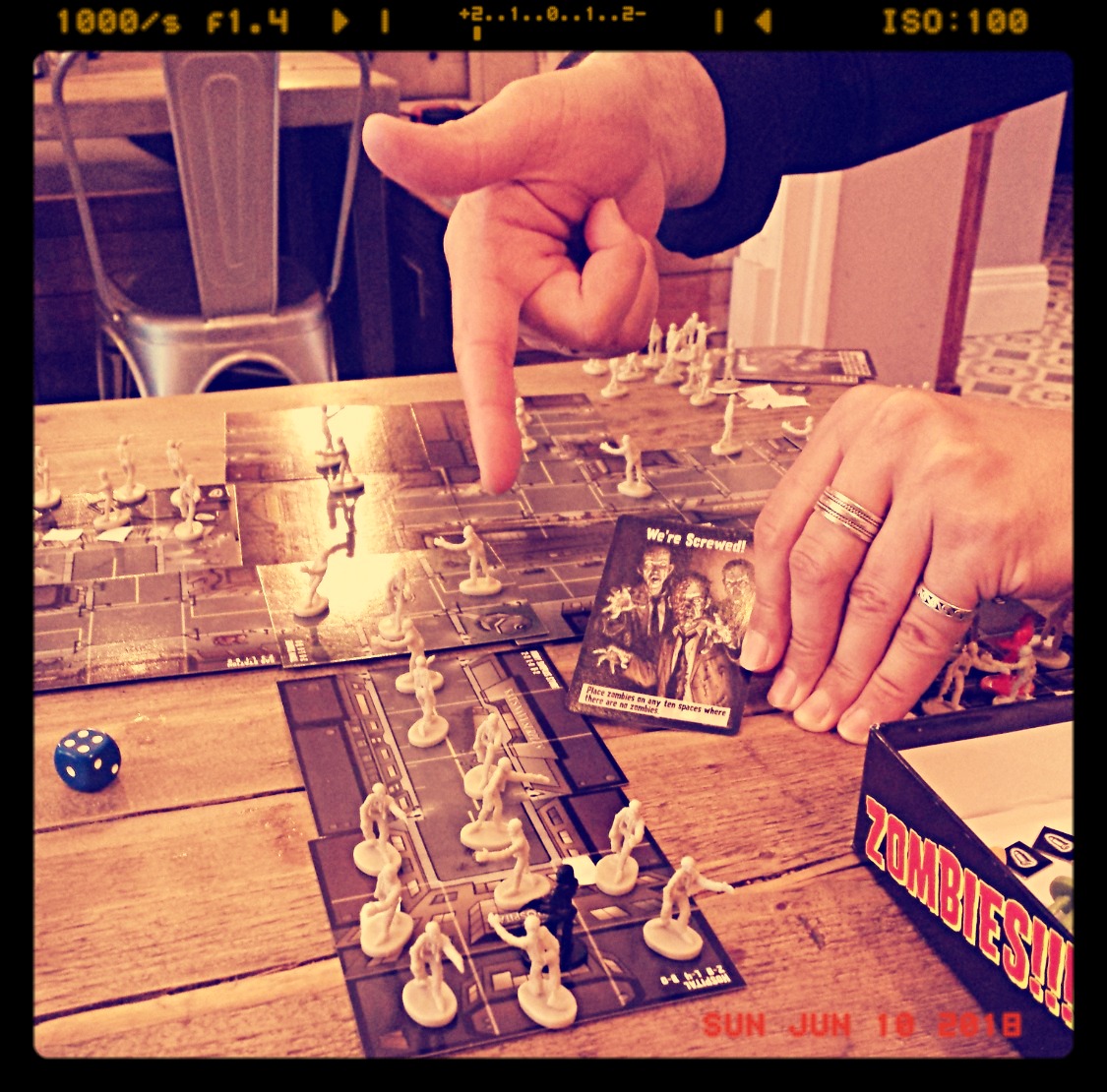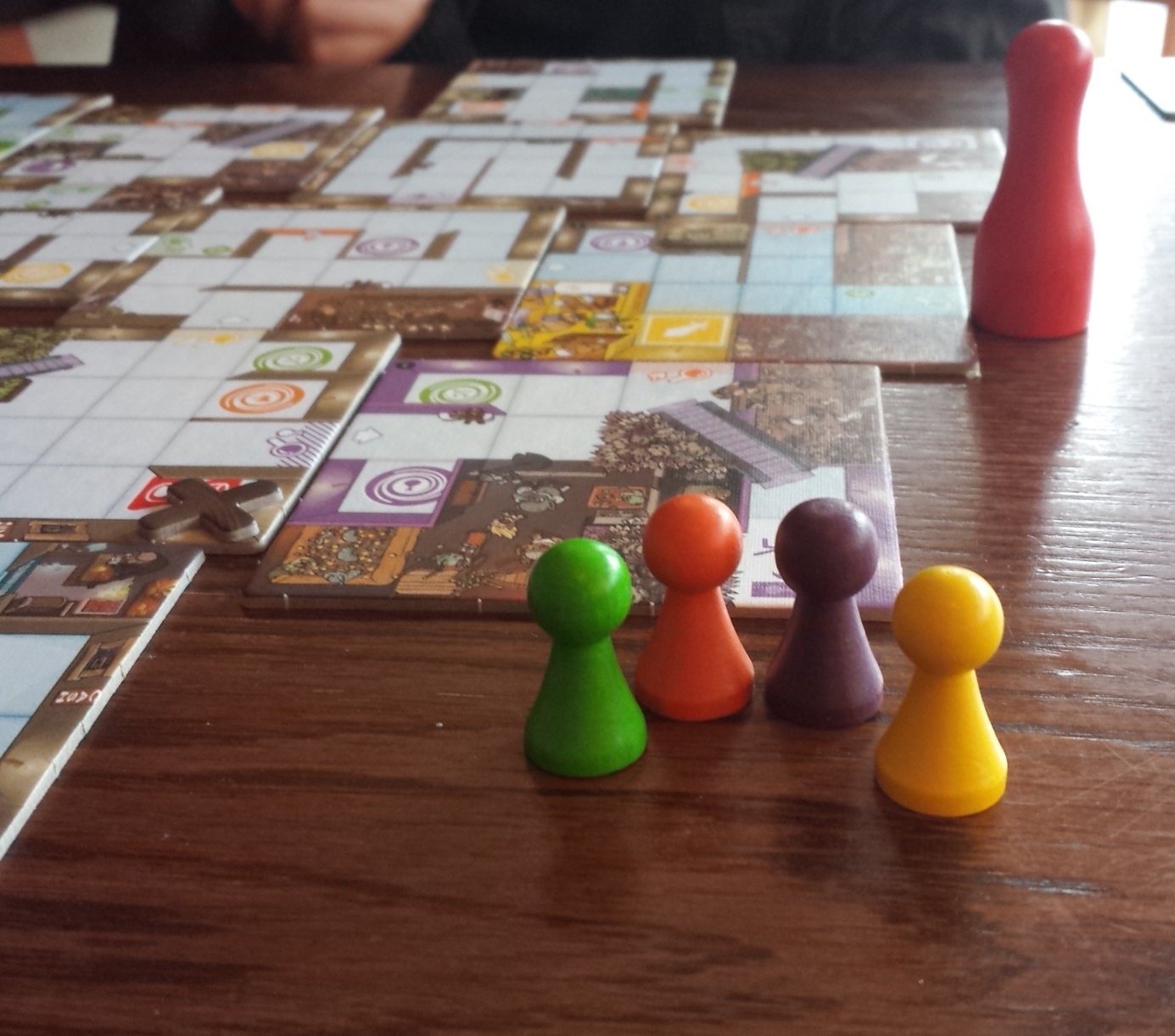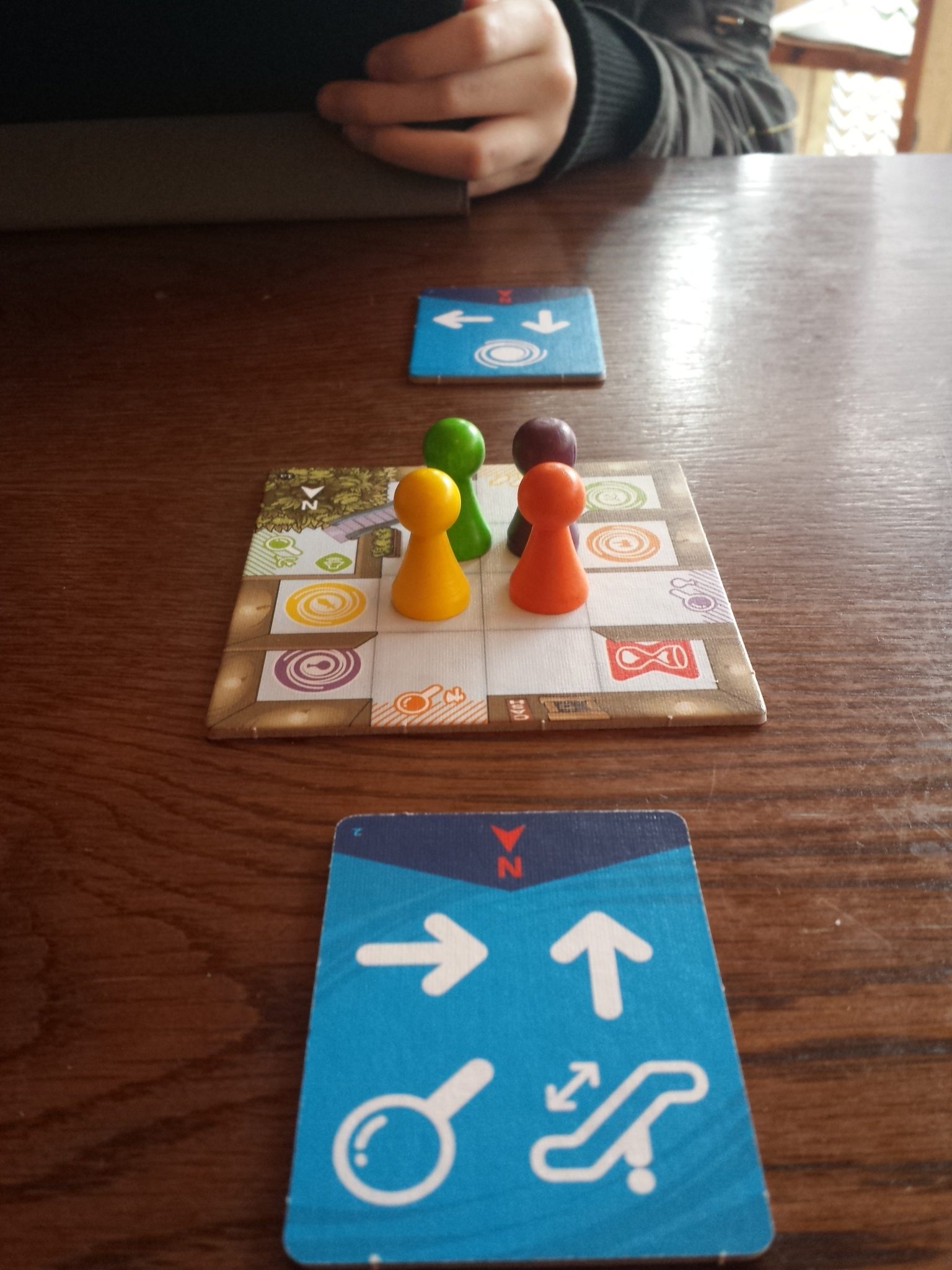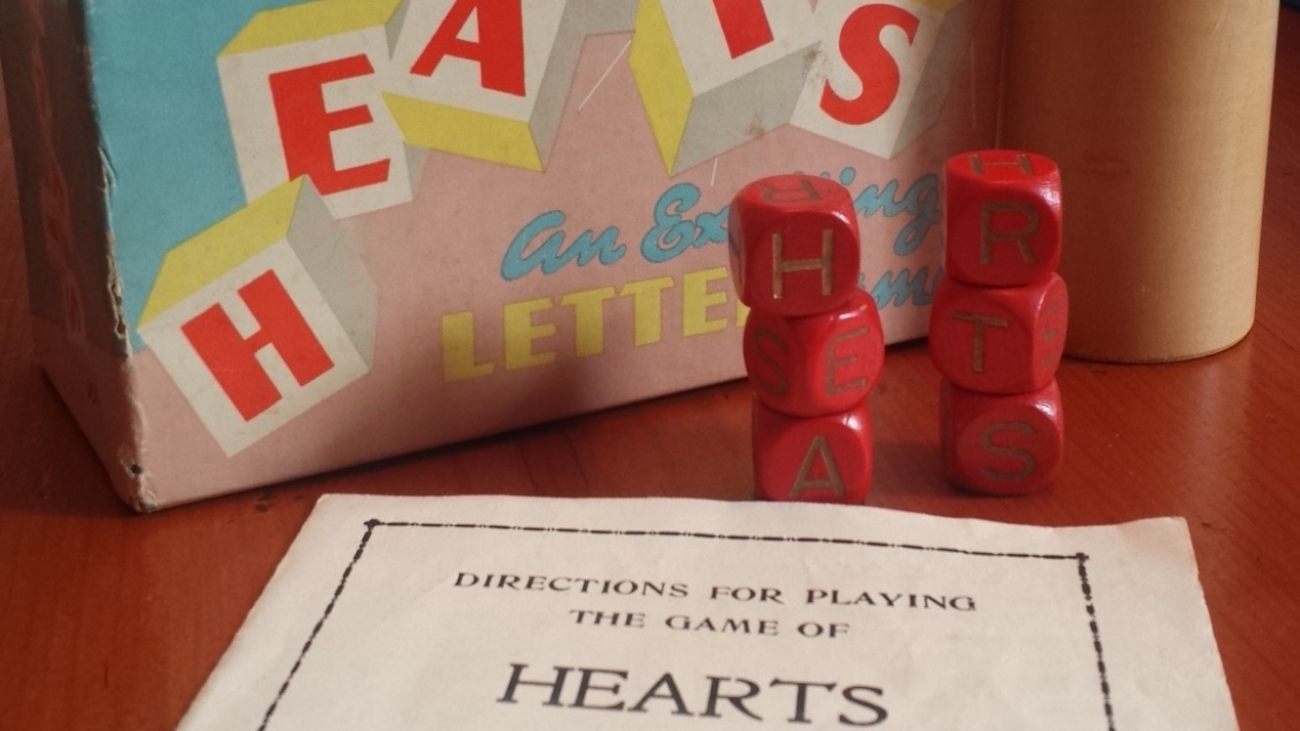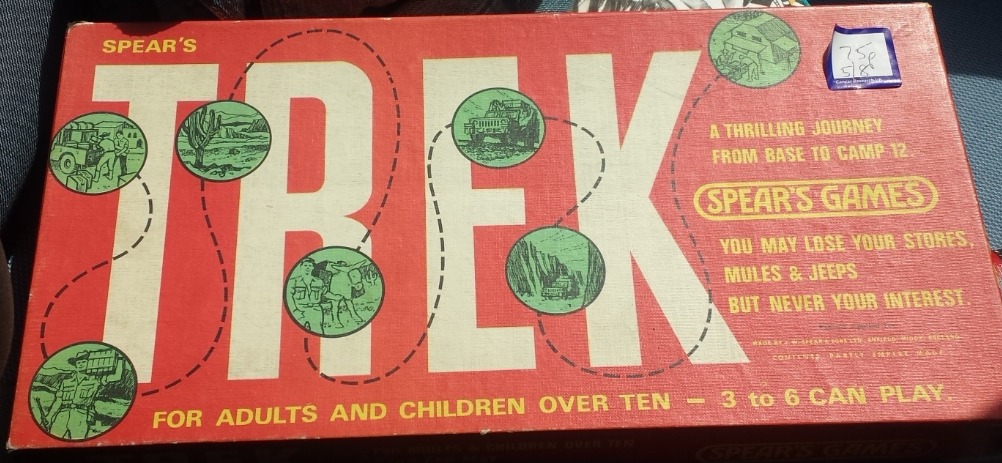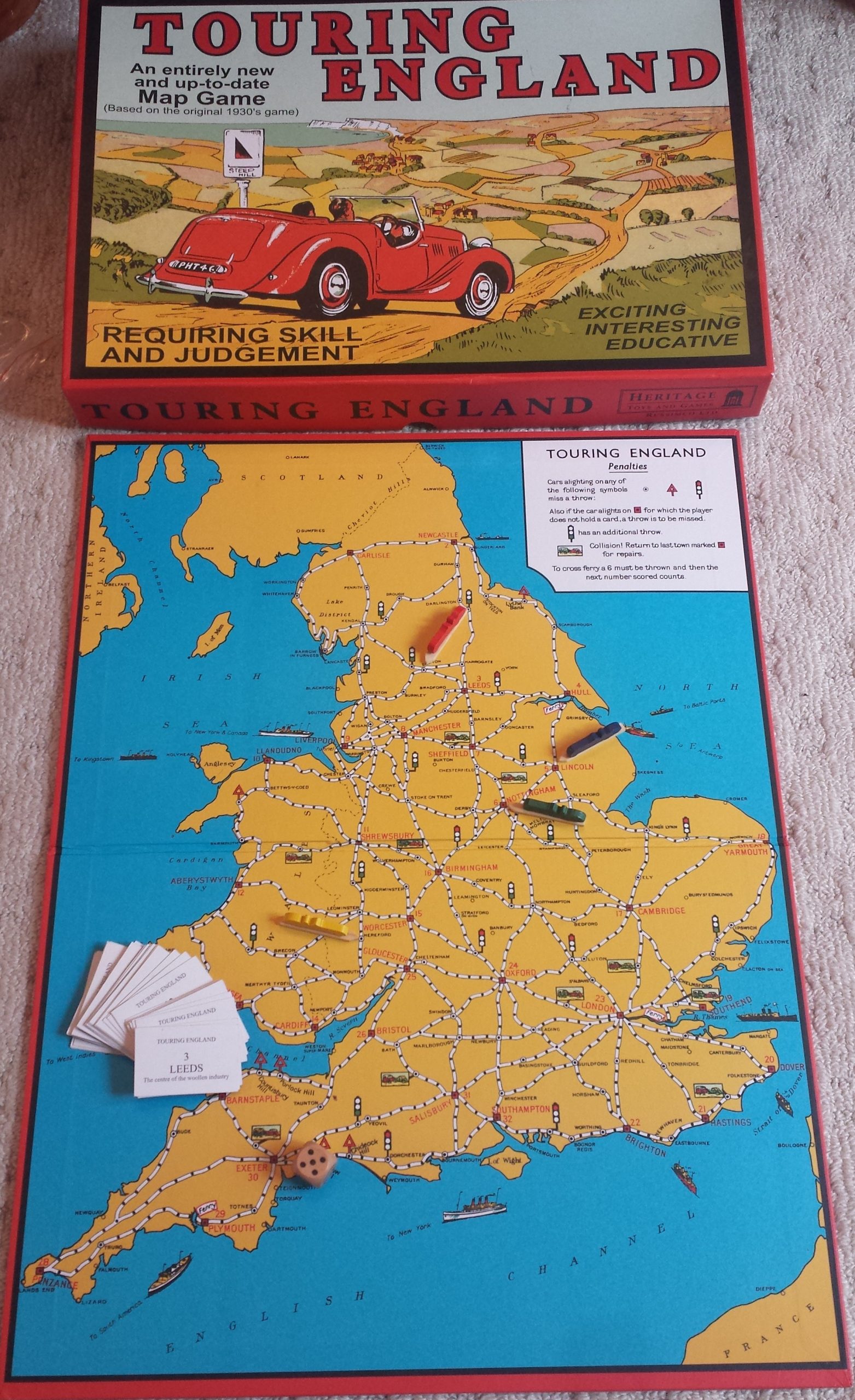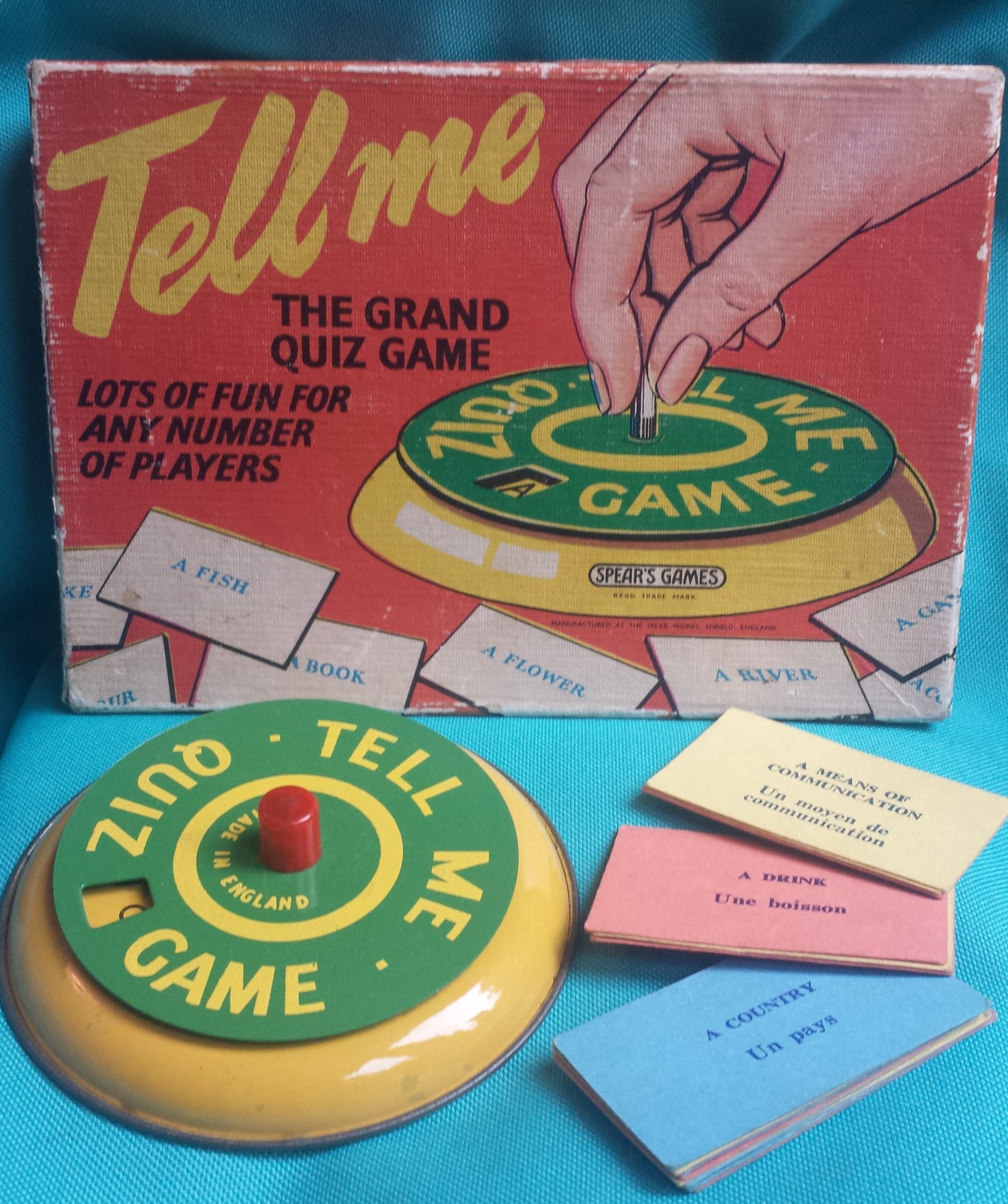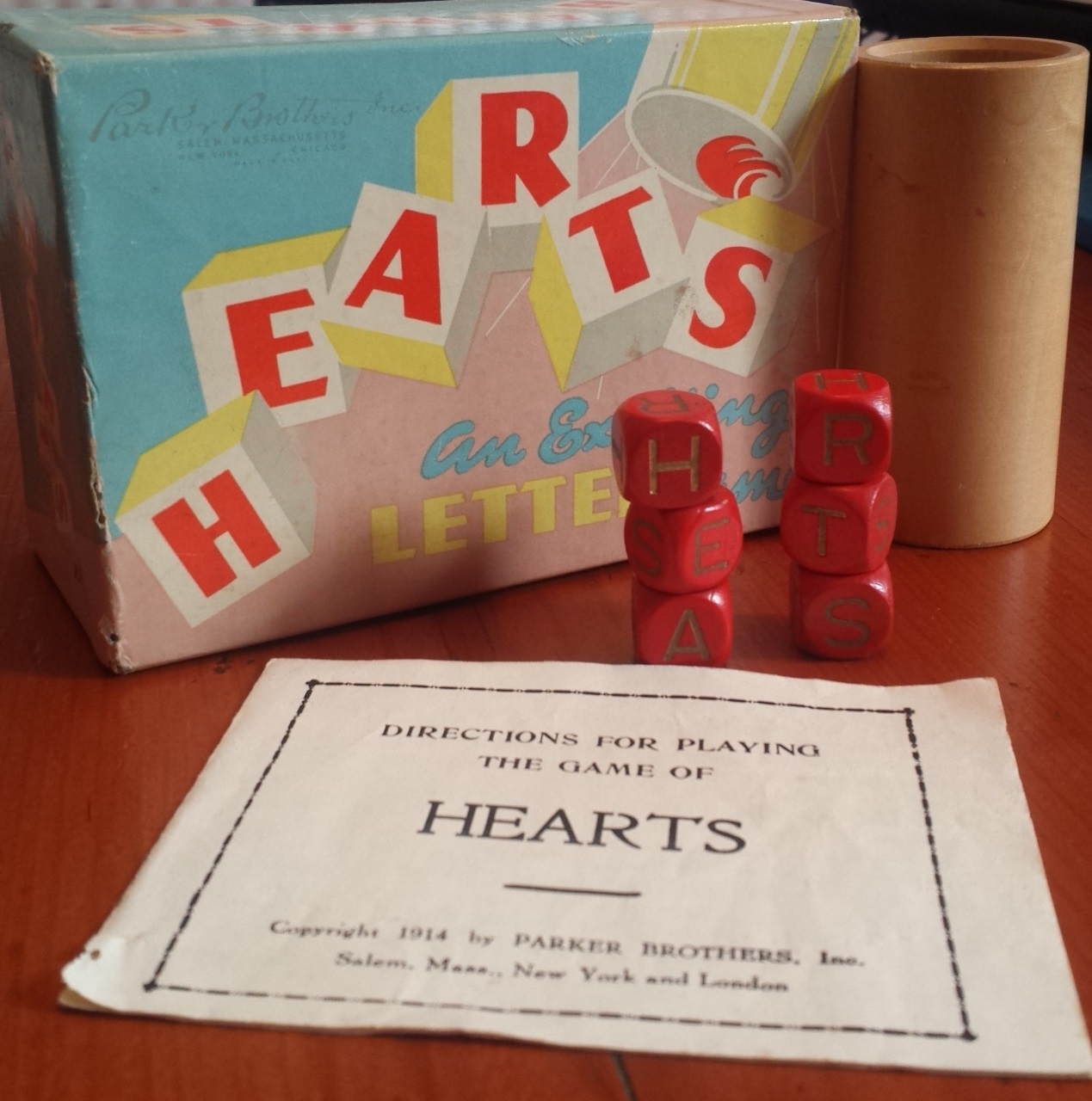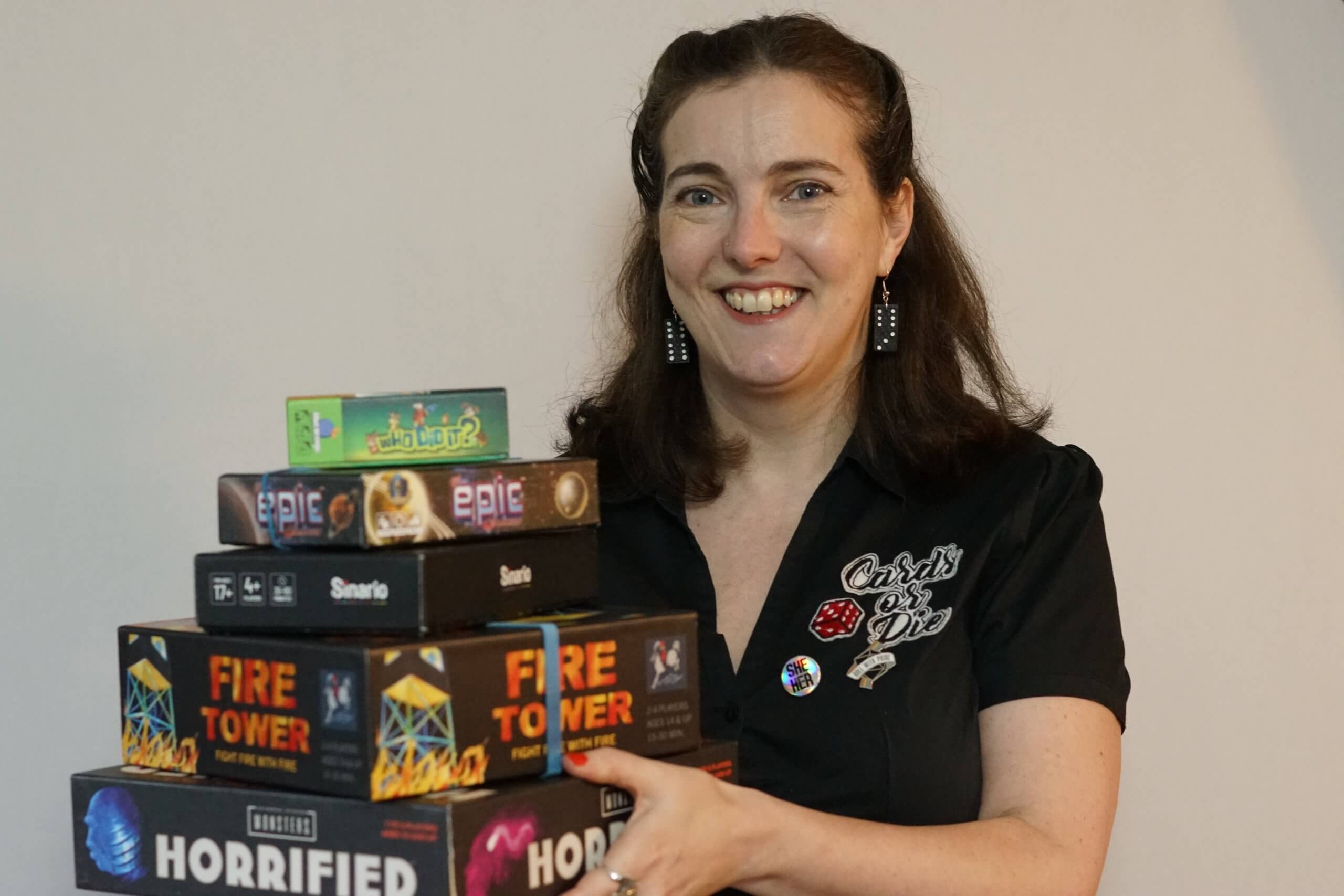It might just be me but this heatwave has slowed my brain down. I feel sluggish, struggle to concentrate long enough to find out whether the lie detector result is surprising on Jeremy Kyle and I lose my car keys twice a day (which is an increase of 50%). It got me thinking that I should play some games which increase my brain power. So I raided the Cards or Die library and had a go at these brainy games. Have a go at them yourself – I’ve included a sample from each game. I’m not asking for much – I don’t want enough brain power to develop psychic powers and take over the world… although…
To be honest I’d just settle for less time searching for my sodding car keys and less time getting lost on journeys. So, here are my findings.
Mindtrap
Spears Games 1993
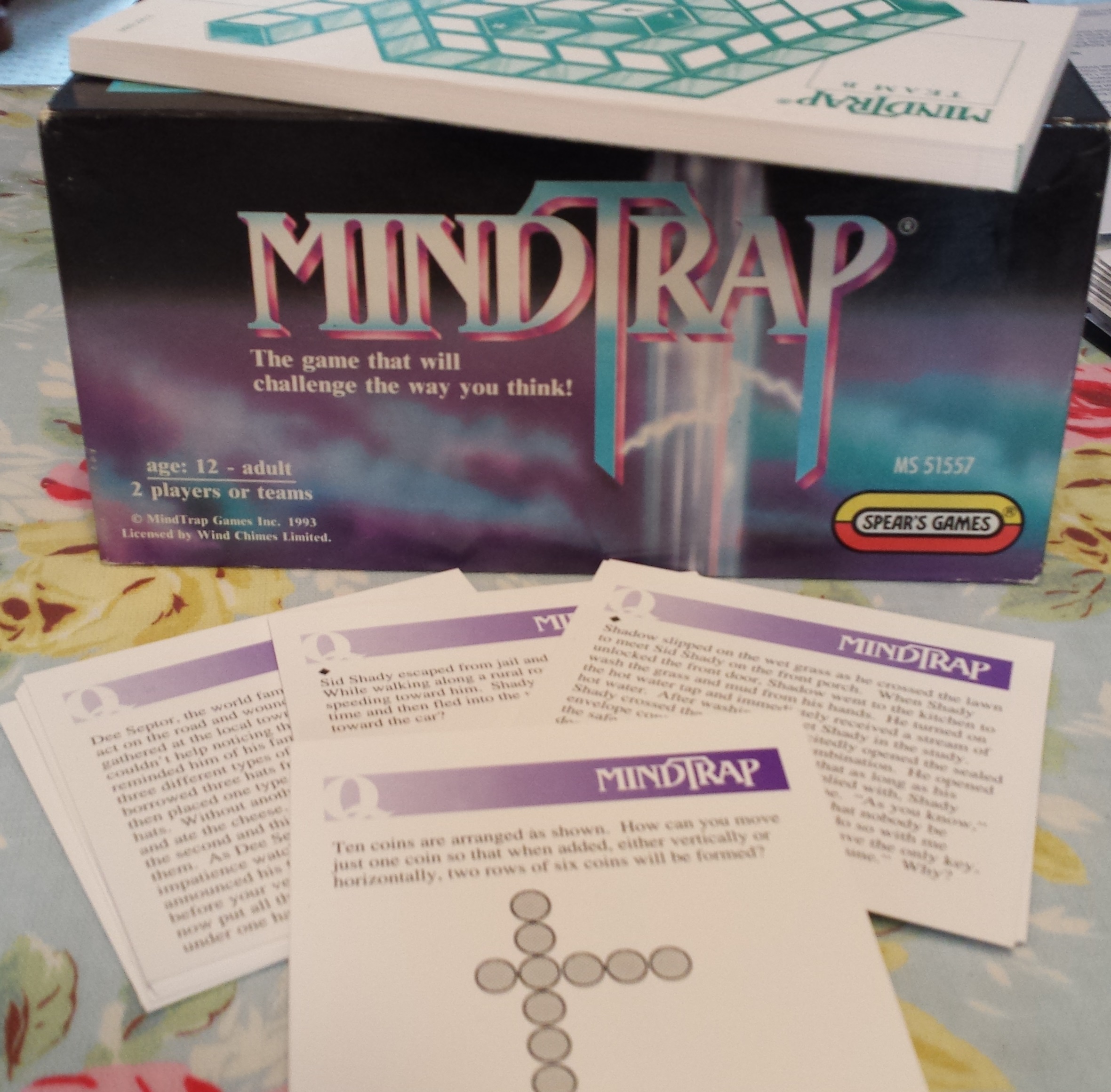
The fact that the winning conditions of this game require you to reach the end of an optical illusion tells you everything you need to know about the brain power required here. There are two paths – one shorter than the other.
Play in teams or as an individual and solve the riddles and puzzles to move along your chosen path. It’s a tricky game that appeals to the more cryptic brain.
Here are a few examples to get those little grey cells working!

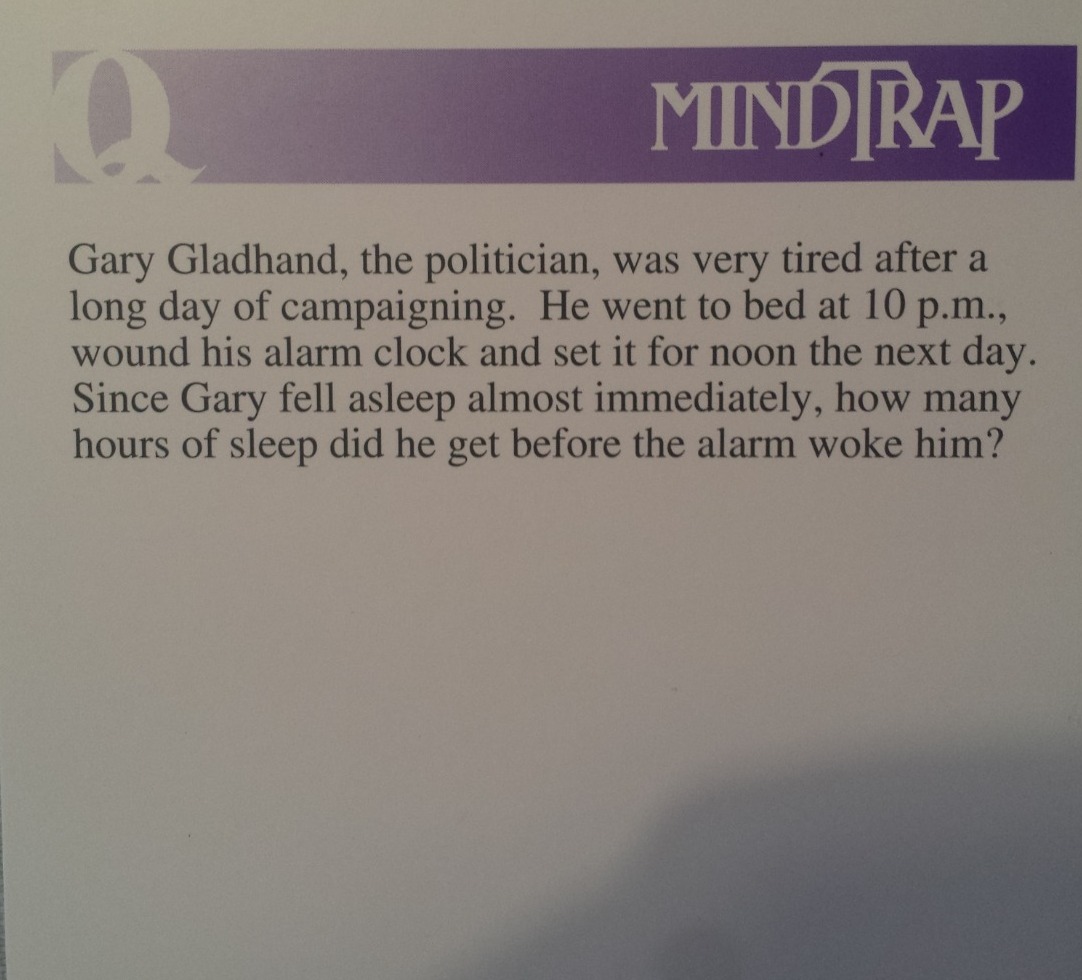
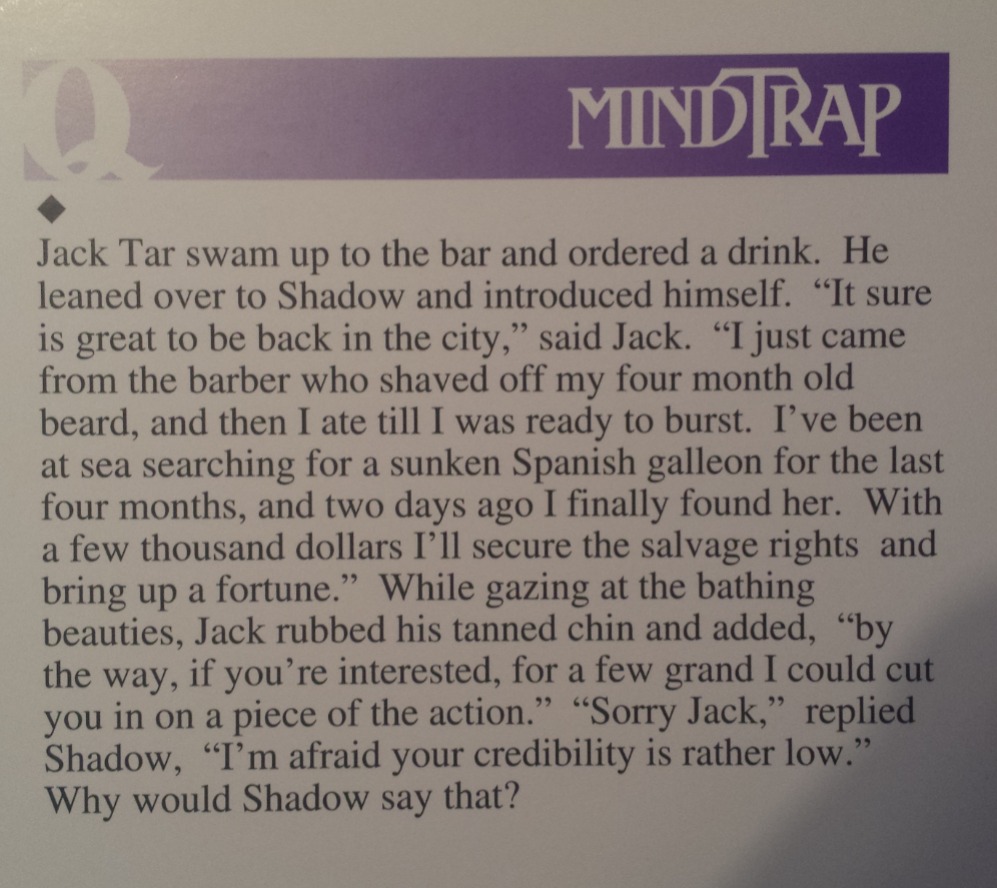
Verdict This has not made me any cleverer (and certainly hasn’t made me feel any cleverer) but it is perfect for people who enjoy riddles and problem solving. And perfect for the pub as it doesn’t take up much space.
Enigma
Alexander Duncan 1998

Enigma is similar to Mindtrap in that it in order to win you must solve riddles. You can play as a team or as individuals to move through the maze. The winner is the first to arrive in the centre and then solve a final riddle without being given a clue. As you move through the maze you will land on riddle points (blue triangles). Solving the riddle without a clue will earn you the right to move further towards the centre, request a clue and you still advance – just not as far. Get it wrong here and there is no consequence. However, if you fall into a pit of ignorance (A blue and gold diamond) then you must solve a riddle without a clue to escape and move on. This can (and when we played, definitely did) lead to many missed turns.
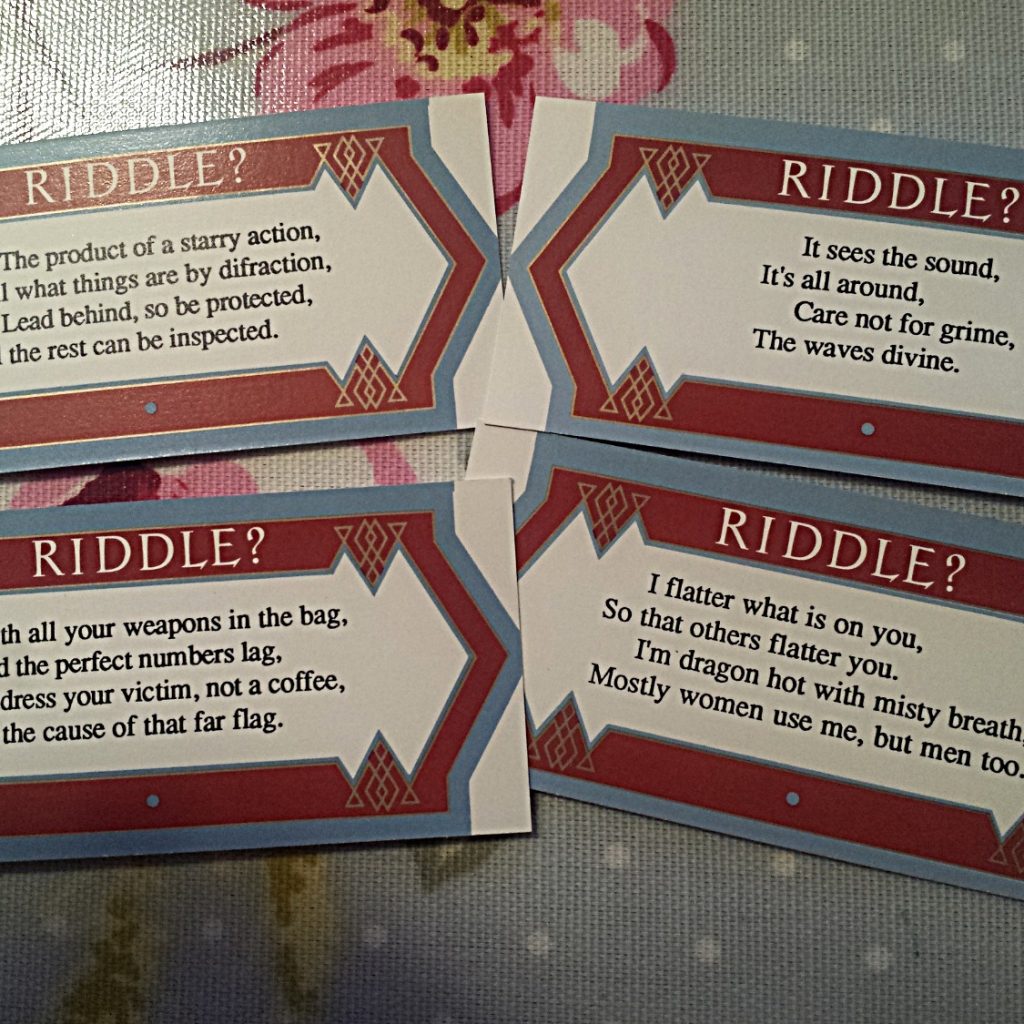
Verdict
Honestly, this game is way too clever for me. Getting lost in a pit of ignorance is not much fun after a while it’s all a bit too much like trying to drive to… well, most places. But if you thrive on exercising your brain then you should try this one out.
Sci-Fi Trivia
MMG 1994
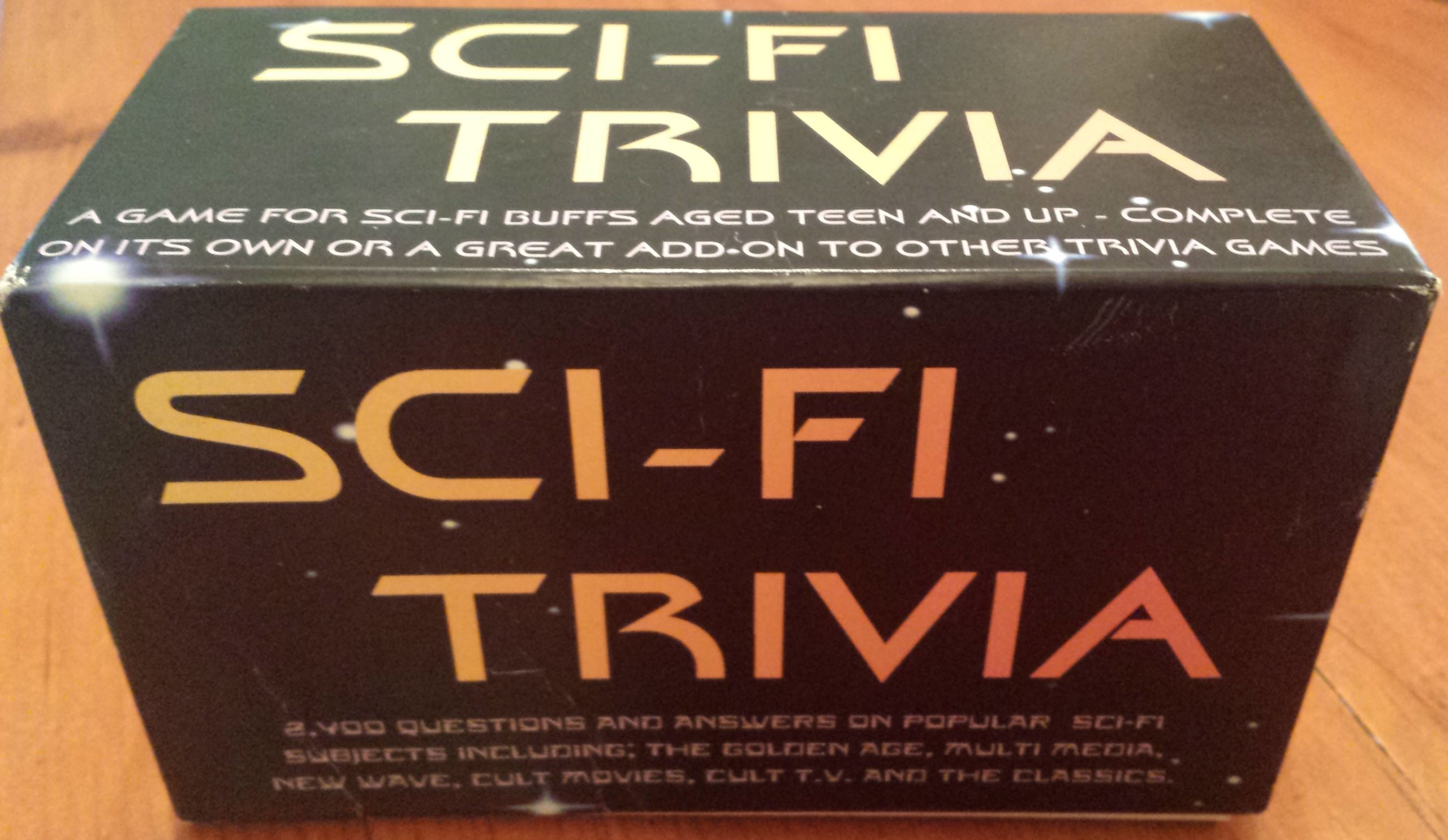
My daughter recently asked a question about a game in our local Geek Retreat, she prefaced it with the words “You’re a nerd genius, you’ll know this…”
That would serve well as a preamble for any of the questions featured here.
A roll of the die determines which question you or your team will answer from the following topics: The Golden Age, Multi Media, New Wave, Cult Movies, Cult TV or The Classics. If you leave aside the confusing and arbitrary nature of these categories and don’t try to work out when any of them refer to, you can enjoy a challenging game which will test your memory and knowledge.
Pleasingly the rules refer to he/she throughout. (See, it’s really not that difficult. You may also note that I have used second person when explaining to you how to play- I don’t find it a challenge not to assume everyone is a white man. But I digress, that’s a whole other blog).
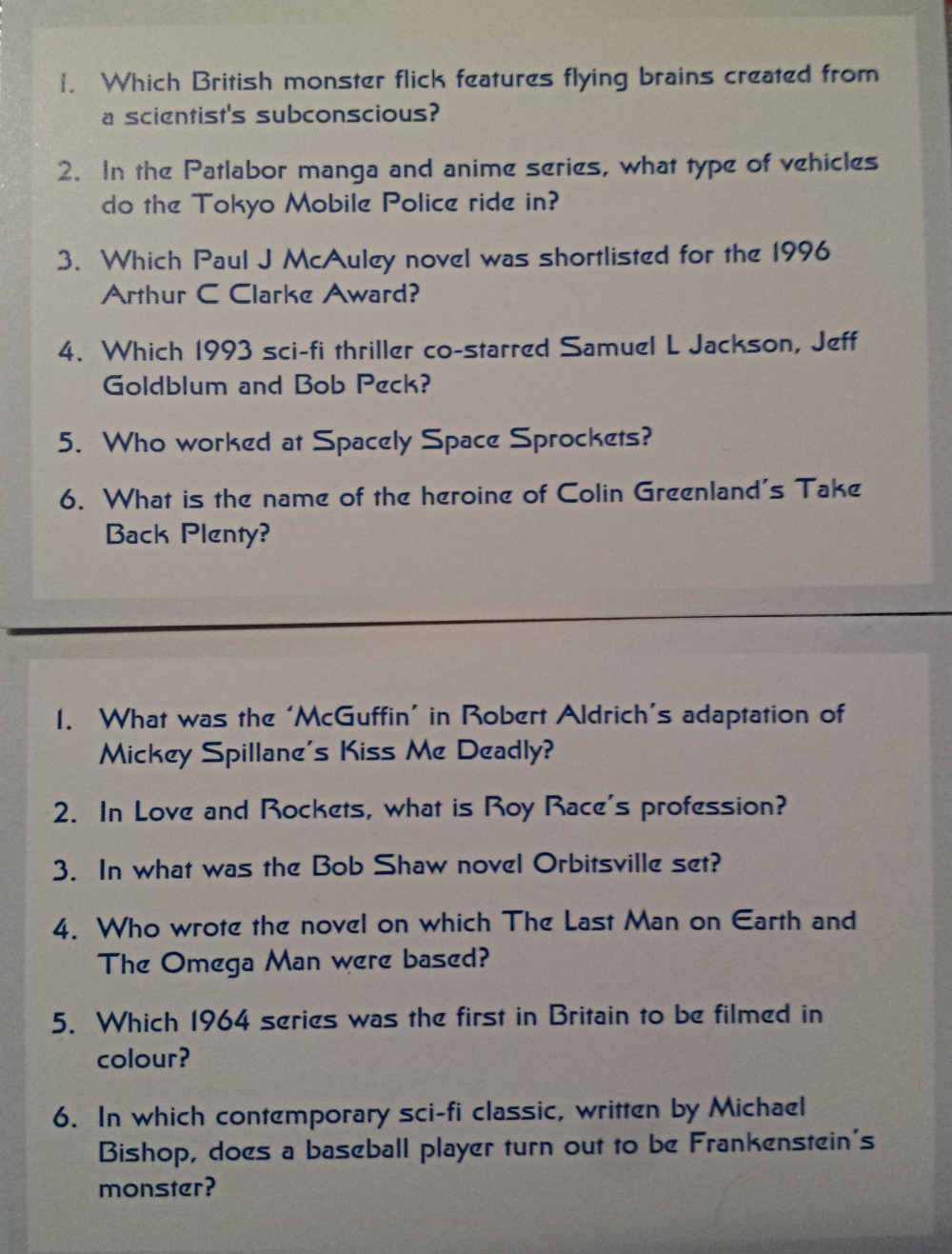
Verdict
This is not a quiz for those of limited Sci-Fi commitment. It is not enough that you watched Star Trek once or that you were delighted when they announced that woman off of Broadchurch* was going to be Dr Who. However, if you are a nerd genius then this is the quiz for you.
(*I know it’s Jodie Whittaker. I’m being sardonic.)
Backwords
Random House 1988
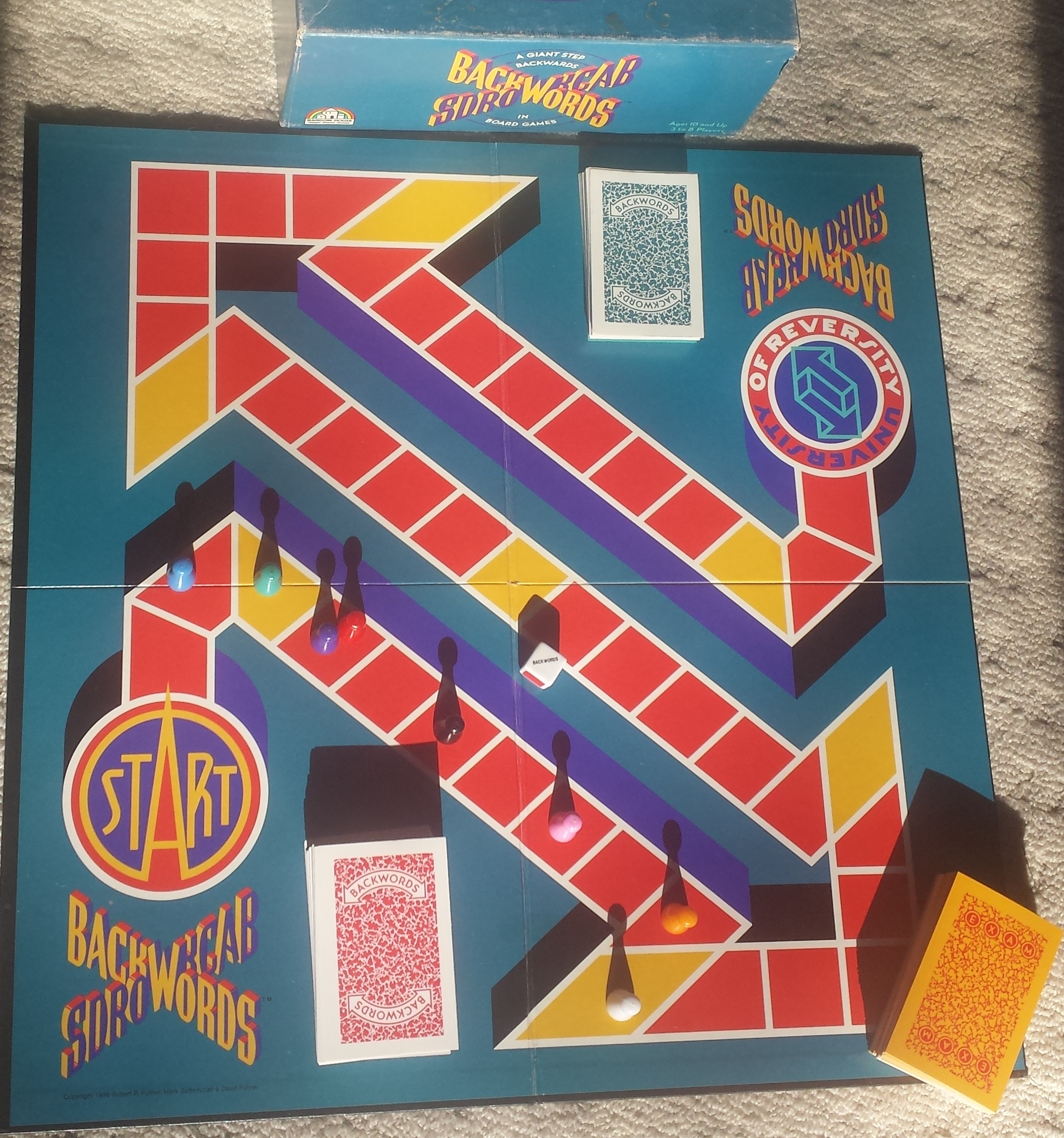
In this game for 3 to 8 players (or teams) you work towards your graduation from the University of Reversity by solving as many backwards words as you can. There are Exam cards which you collect throughout the game with trickier spellings on. These are saved until you or your team reach the University to sit your final exams – you can also get rid of these by landing on the same space as an opponent. There are clues on the cards that you can choose whether to use. All of the backwords are helpfully spelled phonetically to enable you to read them easily.
Here are some examples – of course we need to remember that hearing them read aloud is A LOT more challenging than seeing them written down!

Verdict
I enjoy word games so I like the challenge of this one. It’s so much harder than you expect it to be. I’ve read about children who invented secret codes and languages using backwards spelling, so if you’re one of those kids you should find it a lear ezeerb!
Brain Box
Green Board Game Co 2007+
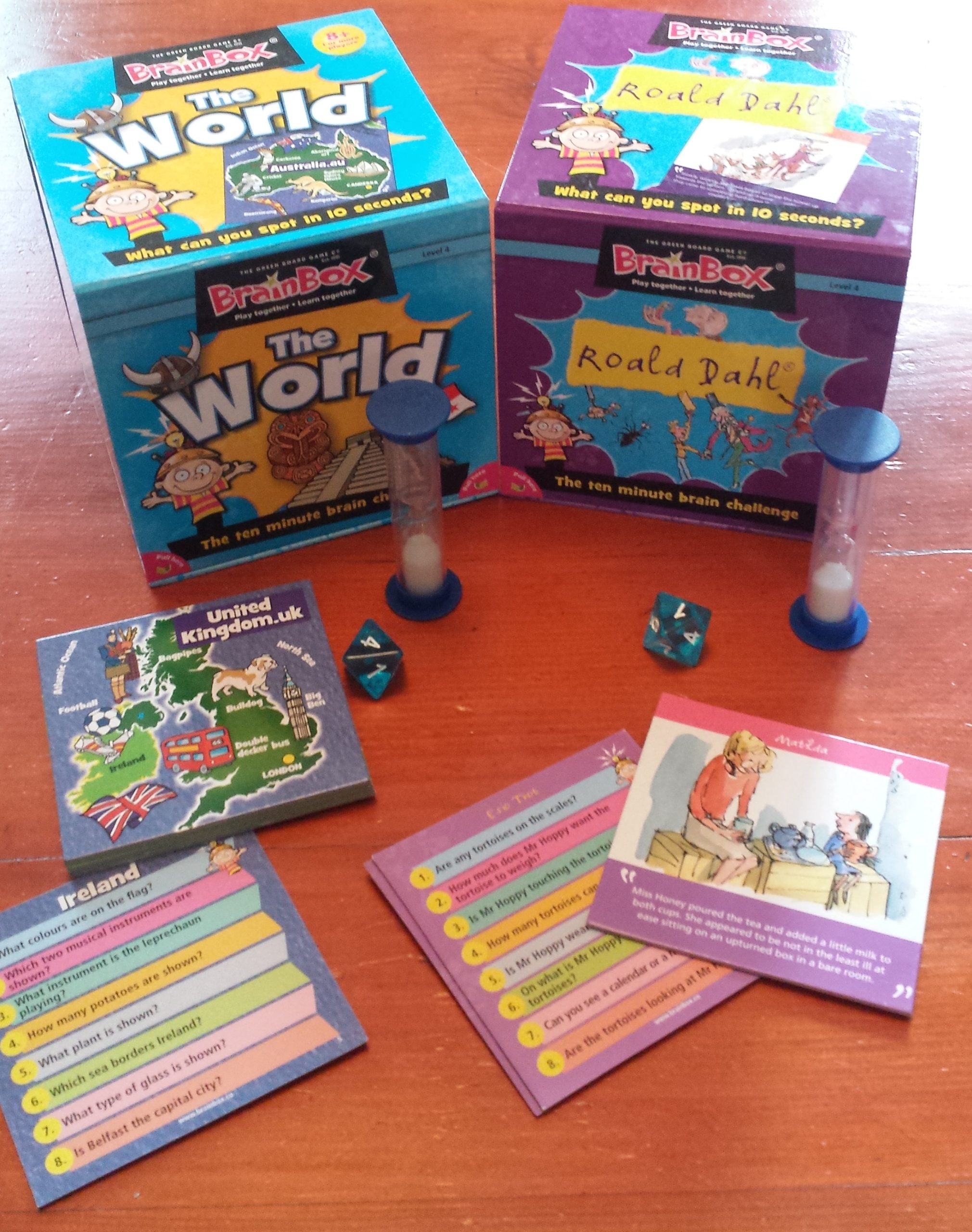
Brain Box is much more my level. There are no riddles or specialist knowledge here – just plain old observation and memory. The parts of my brain that this uses are the ones I worry about most and am keen not to lose. There are different Brain Boxes to choose from – The World, Roald Dahl and The 1990s!
You have a scant 10 seconds to study the card you are given, you then roll the die and your opponent asks you the corresponding question. Have a go at the one below – scroll to the bottom for the questions.
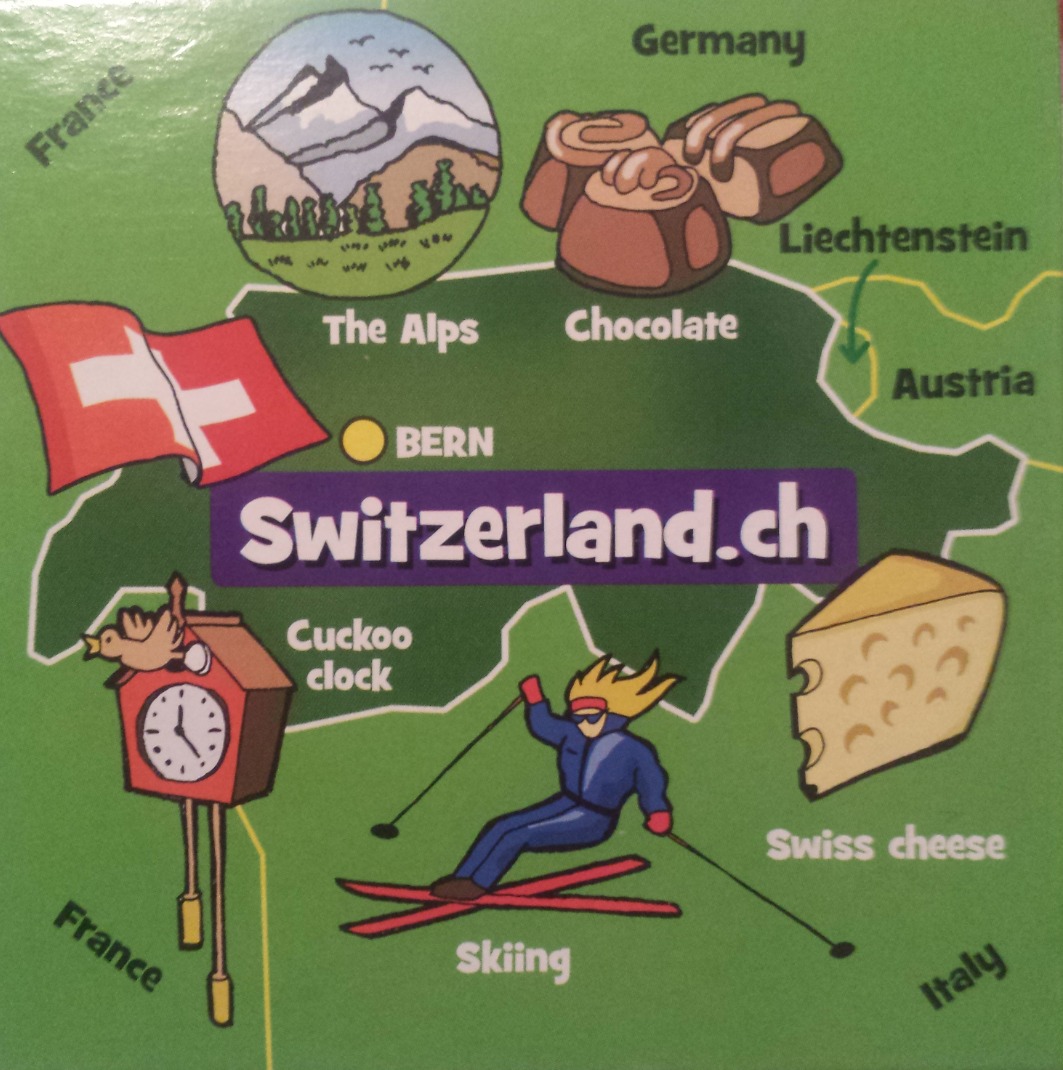
Verdict
I enjoy this game; it’s fast paced, fun and you can play it with all the family. It doesn’t rely on specialist knowledge or skills, which makes it more accessible. Admittedly it is the least challenging game here but it still exercises my brain and I’m happy with that!
Cortex
Captain Macaque 2016
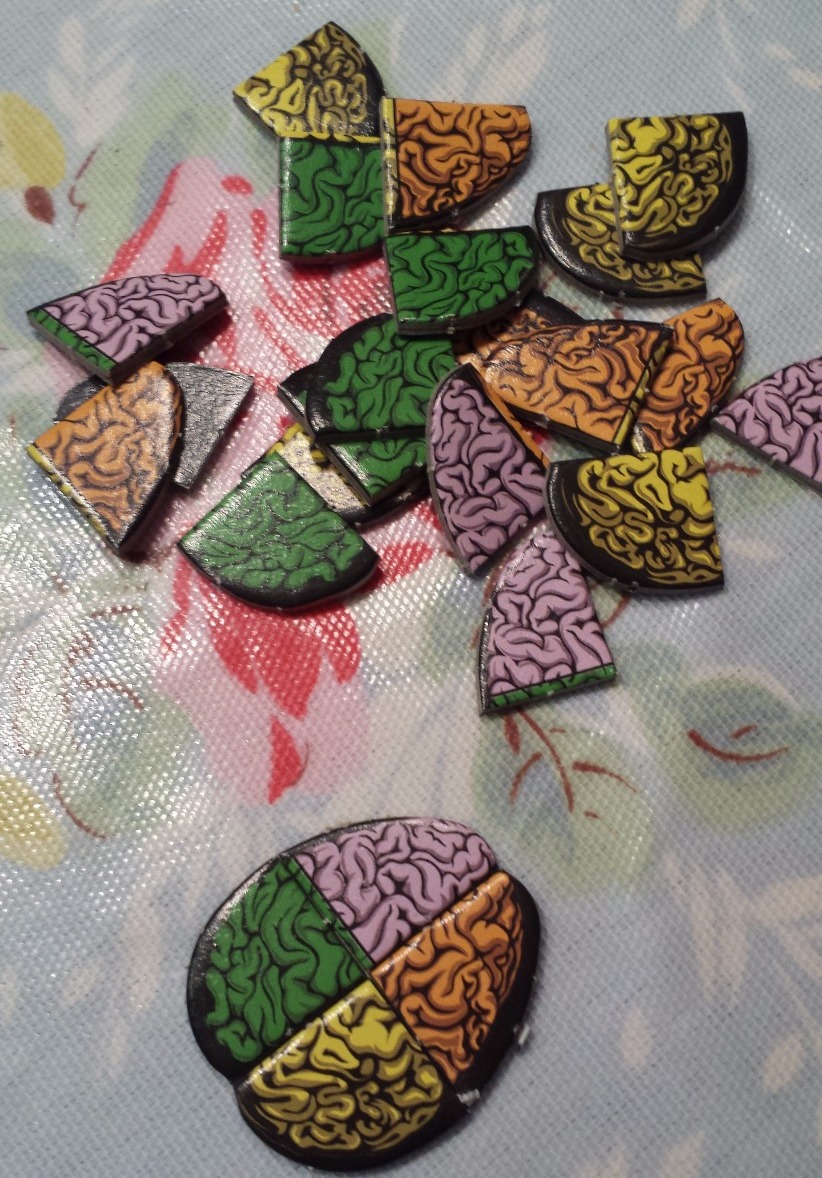
Of all the brain games, this is my absolute favourite. The aim of the game is to build a brain by collecting sets of challenge cards. You win the challenge cards by being first to cover the card with your hand and give the correct answer. The cards test you on memory, co-ordination, perception, observation, reasoning and touch.
The touch challenge is ingenious and one that I thought was going to be easy. Turns out that distinguishing a zebra from a teddy bear using only touch is quite tricky.

Spotting the image featured most frequently and memorising the images on the card are my easiest challenges and these are the cards I find most visually pleasing. I love the retro style prints so maybe that makes it easier for me.
But my nemesis is this chirpy looking guy: He expects me to label my hands (left is blue, right is red) and number my fingers 1-5. His demands don’t end there though- next I have to match the fingers as shown on his annoyingly cheerful face. I can sometimes co-ordinate myself before my opponent. Rarely, I can put the correctly numbered fingers on the correct part of my face – but never with my tongue still in my mouth. And always in painful slow motion. Most often I just sit staring at my hands in a kind of stupefied panic.
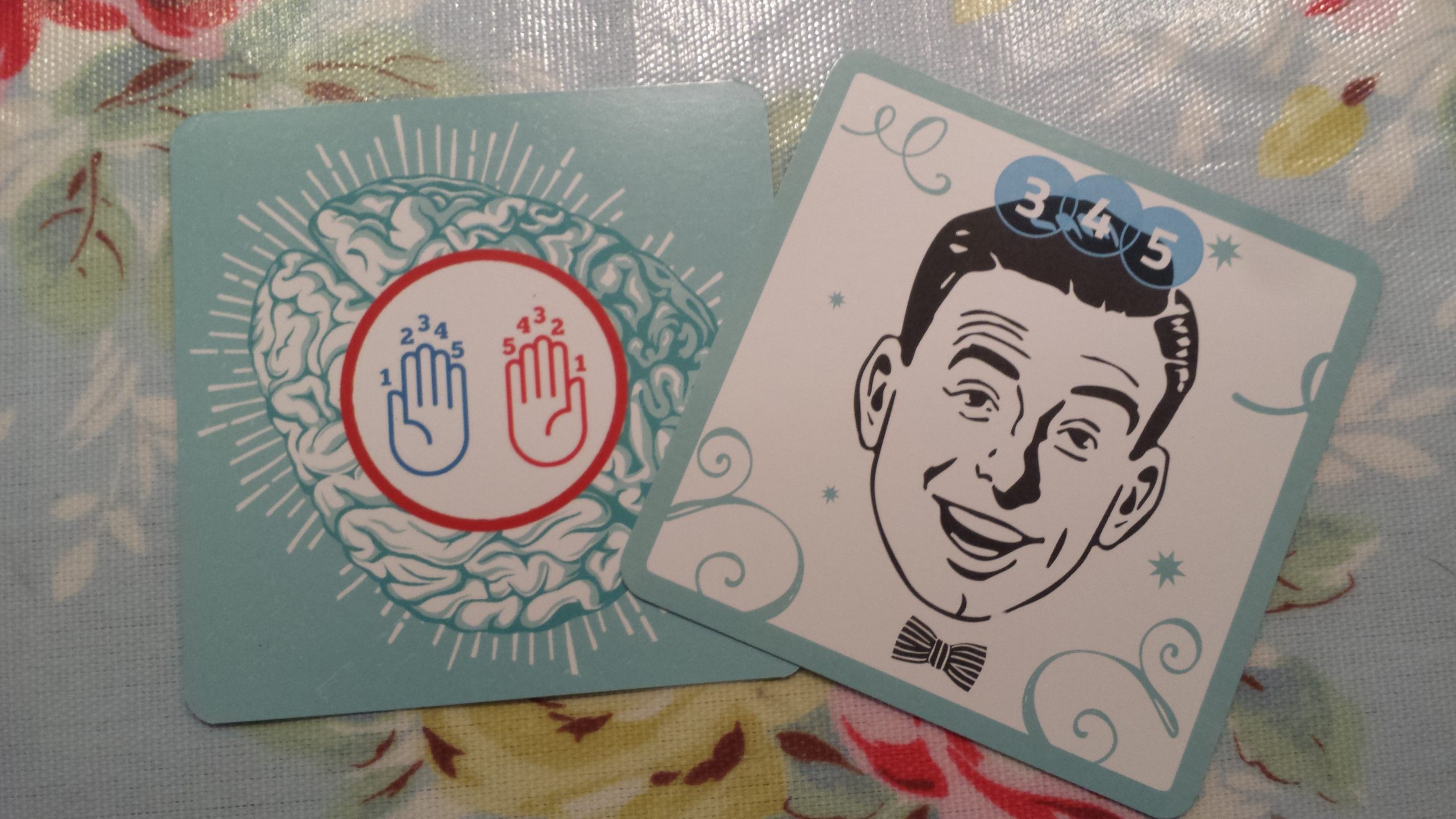
See how quickly you can solve the following:
Maze – which is the exit?

Colour – which word is written in its own colour?
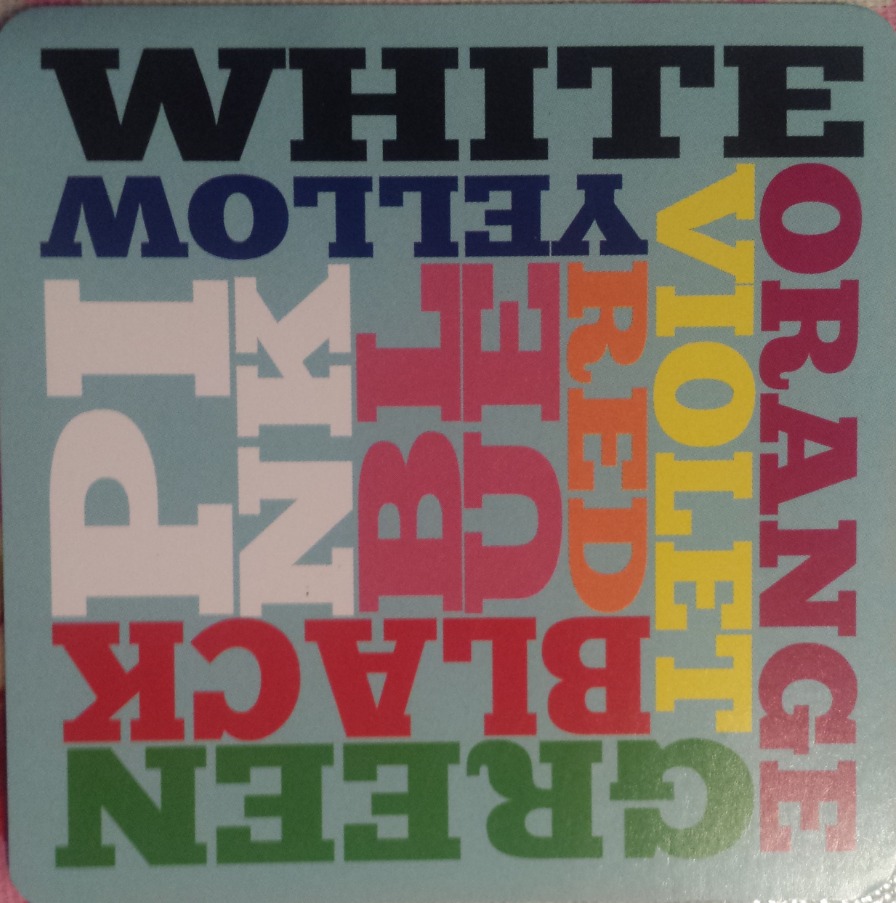
Pairs – which is there two of?

Spatial Awareness – Which shape fits in the space?
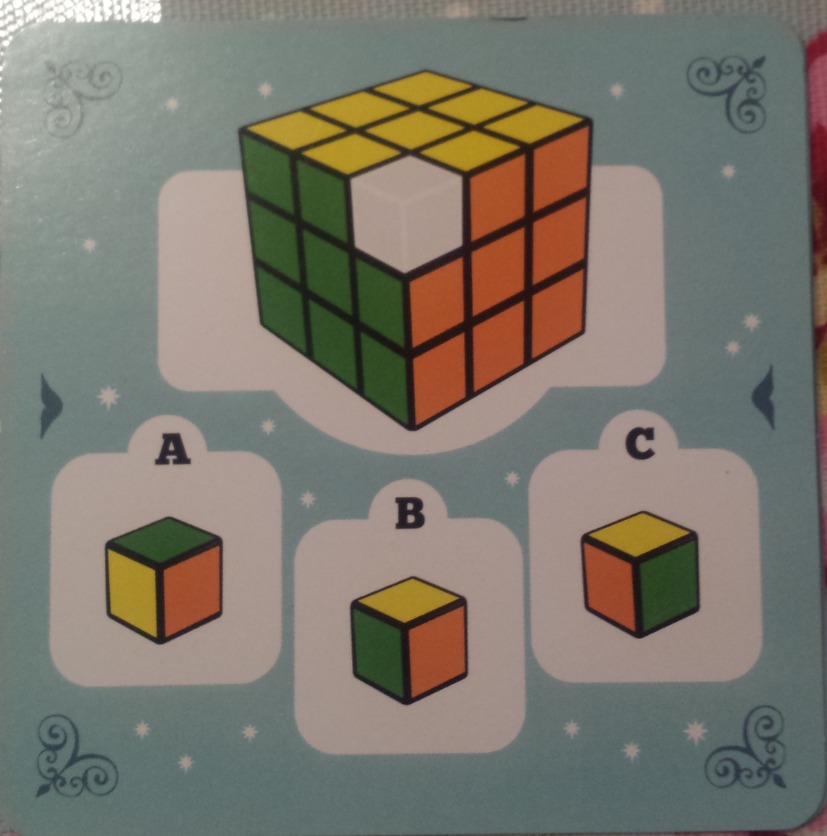
Verdict
Described as ‘a brain-busting card game’ by its creators, Cortex is certainly a game that challenges you in lots of different ways. The nice thing about this game is that everybody seems to excel in one skill or other, whether it’s memory, colour recognition or touch. It means that some cards are easier than others which gives it a pleasing balance. No-one wants to be so challenged that they feel like they’re losing all the time. That’s just not fun.
Overall Verdict
I’m not sure whether playing these games has actually made me cleverer or just highlighted which bits of my brain don’t work so well. Either way, I’ve had fun trying and it’s all about the taking part. Right? Now where did I put that copy of Dobble…?
So… how did you do?
The Answers
